Welcome, one and all to my new type of analysis
blog. This will be different than most of my other VS-based analyses, as this
will be a deep and comprehensive look into the Star Wars franchise and where
they stand in the VS scene. If you read my Devil May Cry blog, this will be
similar, though it will be much more extensive as it will deal with various
canons and roughly 40 years worth of material.
When any Star Wars character is introduced to
the VS scene, it can be rather daunting to research the background of that
character. Star Wars is literally a vast universe full of intergalactic history
going back millions of years, comprising of multiple different canons, and a
seemingly insurmountable amount of characters and feats, as well as
overwhelming background and context to those characters and feats.
This blog’s purpose is to streamline each canon,
era, and tier of characters to be much more digestible and less daunting for
anyone looking into these characters or feats, so it will be more convenient and
less time-consuming as most of the relevant information will be displayed in
one place. If any superfluous information is found outside this blog, it can be
cross-referenced and compared here. For example, if someone wants to know how
strong a character is that isn’t featured here, this guide can be used to see
who they scale to and for what reason.
Let’s begin with the most obvious.
What is Star Wars?
This may seem like a very silly question to ask,
as it’s one of those franchises that’s so embedded in pop culture you’d be hard
pressed to find anyone that doesn’t know about it. However, as inconceivable as
it may be to some of us, there are people out there who have never seen any of
the movies, let alone read the books or comics or seen the television shows.
Star Wars is the brainchild of George Lucas. In
its conceptualization, he wanted to create a grand adventure that would be
memorable for the next generation of children, the Great Modern Legend. He
consumed various pieces of media from all genres, mainly taking inspiration
from fantasy, science fiction, and recurring themes from mythology and
religion. At the center of it all, he discovered that all mankind held similar
beliefs and ideals, and this generalized idea became the central factor for
what would eventually become Star Wars: The Force.
His story concepts combined elements of fantasy
and sci-fi to create a new sub-genre known as the “Space Opera”.
Concepts
The Force
In essence, the Force is everything. The Force
is a cosmic wellspring of energy that exists outside the physical realm. All
matter, every being, and their actions are an echo of the Force. The Force is
classified into two main aspects, the Living Force, which interacts with the
physical realm that the characters exist in as a metaphysical well… force, and
the Cosmic Force, a planar dimension that exists higher than the physical
one.
The Whills, beings that can exist between the
Living and Cosmic Force, as well as interact with the physical world, created
the Midichlorians. Now, it is a misconception the the very idea of the
Midichlorians “destroyed the mysticism of the Force”, and that they’re “dumb
bugs in your blood that create the Force instead of the Jedi”, but this is far
from the case, and showcases a vast misundertanding of what the Force is and
represents. The Midichlorians are a bio-organic nexus that establishes the
connection between the physical and the Living Force within all beings, the
same way that life forms in the real world produce their own light and gravity
fields, however miniscule they may be. It’s a scientific explanation to an
otherwise supernatural phenomenon, just another example of George Lucas combing
all aspects of human belief into one, centralized idea.
This connection allows those that are
particularly sensitive to the Force to willfully manipulate aspects of matter
and reality, to an extent that is dependent on their strength of connection to
the Force. The two most notable factions of Force users are the Jedi and the
Sith, one who uses the Force as peacekeepers and achieving serenity of the
self, and the latter of which believe that the Force is theirs to control and
to enact their will over the weak. The two extremes created the concepts of the
Light Side and Dark Side of the Force, and all conflict in the universe, be the
beings who enact it aware of it or not, are a result of the Force itself
attempting to find balance in life and existence.
Kreia described the Force to the Exile: https://youtu.be/fedcD0hFEQU
The Force allows the telekinetic manipulation of
matter, although telepathy, energy manipulation and projection, sensing, among
many other abilities are also possible. The Force is what creates and binds
everything, to manipulate it is to manipulate the very forces of existence, and
its applications are potentially limitless.
The Force allows the following abilities, with
the effectiveness and access to them being dependant on the user’s strength in
the Force:
Force Push
The user extends their hand and manifests the Force in front of
them to blast opponents or objects away with concussive force. The
effectiveness of the technique is dependant on the user’s bond with the Force,
and the hand gesture is not necessarily needed as there existed alien Jedi and
Sith with strange biological features and Force users who had their limbs
amputated such as Darth Vader who are still capable of using it.
Force Grip
Allows the user, as the name would suggest, to grip a being or
object with the Force and move it similarly to Telekinesis. Again, the size and
weight of the object that the user can lift or move is dependant on the
strength of the user’s connection to the Force. Jedi and Sith can manifest the
Force virtually anywhere, unlimited by space, evident as Darth Vader used Force
Grip to strangle Imperial officers from lightyears away. In
some cases, it can bypass durability and constrict organs or cause involuntary
spasms of internal vitals.
Force Crush
Force Sensing
A Force-sensitive can peer into the Force in order to gain
awareness of events and surroundings. It can be used to sense danger and react
accordingly similar to that of Spider-Sense. It can also be used to sense the
emotions and intent of others, demonstrated by Sidious as he often used it
against Vader to tell if he intended to kill him. As Obi-Wan quoted in A
New Hope, “It was as if millions of voices were crying out in terror, and were
suddenly silenced” when he felt the Death Star’s destruction of Alderaan, it
does not have to be consciously activated, though doing so increases its
potency. A being also does not have to be alive or carry the Force with them to
be sensed, as it can also be used on
droids.
Precognition
The Force can also grant its users visions of
future events. These visions can also be forced on others such as the Force
Vision Palpatine gave to Anakin to manipulate him in Revenge of the Sith.
It also has its applications in combat:
It is also described by Qui-Gon Jin as “Jedi
reflexes”, and he explains it allows the user to react to an action or event a few
seconds ahead of time.
Tutaminis
Tutaminis refers to both an aspect of Jedi
philosophy and the technique of absorbing and projecting energy. It can be used
to absorb Force attacks from opponents, but it can also be used to absorb
non-Force energy like blaster bolts, or even, in rare cases, the energy of a
lightsaber blade. Yoda can be seen using this technique against Palpatine to catch and project back his Force Lightning.
Force Sheild
Self-explanatory. Can be used to amplify one’s
durability. Like the other Force abilities, its potency relies on its user’s
strength in the Force. It can be used in conjunction with the Force-absorbing
properties of Tutaminis.
Thought Shield
A mental barrier that obscures one’s thoughts
and feelings. Can be trained to non-Force sensitives to shield from telepathic and empathic probing, but it is
especially effective with the Force. Jedi are taught this ability at a young
age and become more experienced with it with time.
Shatterpoint
"I can see every flaw. All I have to do
is pour the Force into the cracks…"
-Cade Skywalker
A Force ability that requires immense focus in
order to change one’s perception to detect weak points in people and objects
and project the Force in those precise locations. Doing so causes the object to
fragment into pieces much more easily than it would with excessive blunt force.
It can also be used on living beings to re-open old scars and wounds. It can
also be used to find mental and skill-related weaknesses. Obi-Wan uses this
against Anakin in the Revenge of the Sith novelization to find kinks in his
defenses, and Mace Windu is especially gifted in this. Jaina Solo uses it to
destroy Beskar (see Materials).
Force Movement/Force Speed
A Force ability that allows a significant increase in physical
capabilities, particularly agility. It allows the user to leap further and
higher than normal. Yoda most notably uses it to compensate for his old age and
small size and uses it in conjunction with Form 4 Lightsaber dueling. Force
Speed significantly increases the user’s speed, as the name would suggest. A
Jedi using these abilities during battle is said to appear to be in multiple
places at once wielding as much as ten to twenty lightsabers due to the
afterimages they create.
Jedi Mind Trick
A persuasion tactic used to plant ideas in one’s head. One need
simply utter a phrase or a suggestion to cause someone to believe something. It
can be considered a mild form of mind control or hypnotism. Weak-willed
individuals are more prone to this ability, and such targets can become
delirious and disoriented. (The Stormtrooper who hit his head in the doorway in
A New Hope was the same guy Obi-Wan used the Mind Trick on.) Technically it is
not exclusive to weak-willed individuals, as multiple Jedi are capable of
probing Cad Bane, and Starkiller is able to influence Stormtroopers and other
Force users to attack allies.
Battle Meditation
A technique that bolsters allies and allows them additional focus
during battle, while also instilling fear into and weakening enemy forces. This
can backfire if stopped suddenly, as it can cause delirium and incoordination
on the allies it's used on, so it must be eased off slowly if utilized. Also
applies some probability manipulation, allowing more favorable outcomes for the
desired side.
Force Healing
Accelerates the body’s natural healing processes. It cannot
regenerate things such as lost limbs, but it can mend broken bones and damaged
organs in short periods of time. It can be used on someone else or on the self.
There is also a variant of Force Healing that heals against toxins known as
Detoxify Poison. Obi-Wan can be seen using this when he finds Luke after being
attacked by the Tusken Raiders.
Force Scream
An ability used to amplify one’s own voice, can be used to
intimidate opponents and knock them off balance. Kenobi uses this to imitate the roar of a Krayt Dragon to fend off the Tusken Raiders. Palpatine’s Force Scream in RotS disoriented multiple Jedi Masters.
Force Projection/Illusion
Casts an illusion that can interact with objects but is intangible
to those who attack it. Luke’s Force Projection is so especially powerful that
he can manifest a lightsaber that works as effectively as a real one, and those
who use the Force to locate him will sense his projection rather than his
physical body. Ancient Sith are
able to project themselves through their possessions, particularly Holicrons.
Force Concealment
Also known as Force Shroud, Force Stealth, or Bury Presence, Force
Concealment allows a Force-sensitive to hide their presence, making them
difficult to detect by both Force users and non Force users. Palpatine used this
ability to hide himself being a Sith Lord from the Jedi Council for over thirty
years, and Luke used this during his confrontations with Vader.
Force Lightning
The Force can be used to produce elemental-based attacks, such as
lightning. Depending on the strength of the user, it can be several times more
powerful than natural lightning.
Vapaad
The Seventh form of Lightsaber Combat, developed
by the Jedi Master Mace Windu. Technically also a Force ability. Vapaad was
named after creatures that would catch their prey with appendages so blindingly
fast they were impossible to count. As such, it is an incredibly fast,
dangerous, and deadly fighting style that channels a moderate amount of the
Dark Side. It is most effective against those strong in the Dark Side, as it
fed off their power and further
increased the speed, power, and
aggressiveness of the user. In essence, as a Force ability, it can be described
as a combination of Force Movement, Force Speed, Tutaminis and Force Drain,
essentially increasing momentum and speed as the opponent is drained. Mace
Windu when using Vapaad against Palpatine was described in the Revenge of the
Sith novelization as “an oblate sphere of purple fire, with dozens of blades
attacking from every angle”.
Oneness
In moments of mindfulness and clarity, allows
one to tap into the Living Force, becoming a focal point for the fate of the
galaxy itself. Jacen Solo upon achieving Oneness disintegrated the Yuuzhan Vong
army with a mere thought, despite them being immune to the Force.
Force Ghost
“Strike me down and I shall become more powerful
than you can possibly imagine.”
-Obi-Wan to Vader
Upon death, a Jedi fades seemingly into
nothingness, becoming an entity that exists between the Living and Cosmic
Force. Not many Jedi were familiar with this technique, nor did the Sith who
failed to achieve serenity due to their path on the Dark Side, despite their
many efforts to achieve immortality. Similar to Oneness, one’s being can
manifest as a physical representation of the Living Force, only without the
physical form. It allows Jedi to communicate with and influence others, as well
as create projections. They also possess power over natural forces, as Force Ghost Yoda demonstrated by summoning a bolt of lightning from the sky. Force
Ghosts are also able to make contact with and combat physical entities, as
demonstrated by Luke in Rise of Skywalker and Exar Kun, and though Sith are
technically able to manifest Force Ghosts they are not the same as a Jedi’s,
and are usually bound in place to an object.
These are a general overview of what the Force
is capable of, for a full list of Force abilities, click
here.
Jedi Ranks/Classifications
Rank does not always denote power (technically
Revan was a Padawn after he rejoined the Order, and Ahsoka defeated Darth
Maul), though it is important to familiarize with them to scale characters who
have lacking direct feats or appearances.
“There is no emotion, there is peace.
There is no ignorance, there is knowledge.
There is no passion, there is serenity.
There is no chaos, there is harmony.
There is no death, there is the Force.”
-The Jedi Code
Jedi Youngling/Initiate
Force sensitives who were just initiated into
the Jedi Order. Usually, Younglings are recruited at an early age before they develop
adolescent hormones or opinions of their own, though Luke removed this mandate
after he became Grandmaster so that anyone could become Jedi regardless of age.
Jedi Padawan
An initiate who has advanced to a level where
they can now be considered a true Jedi. During the Clone Wars, this was the
point where a Jedi was considered ready for combat, and was taken under the
tutelage of a Jedi Master.
Jedi Knight
A rank that had to be achieved by completing
arduous trials. Those who failed these trials were relegated to healers or
botanists, and those who became Jedi Knights could operate on their own without
the aid of a Master. During war times, this usually meant leading armies on the
front lines. The most common of Force sensitives in the galaxy were Jedi
Knights, with over 10 thousand active throughout the Galaxy before the Empire.
Jedi Master
Jedi Masters were among the wisest and most
powerful Jedi, most notably Obi-Wan Kenobi, Mace Windu, and Yoda, as described
multiple times across most SW media. This means that any feats by most lesser
Jedi or other Force users (with few exceptions) would apply to them.
Grey/Rogue Jedi
Basically the Ronin of SW mythos, samurais
without a master. These include Force Sensitives who left the Jedi Order or
utilize the combat techniques of a Jedi without adopting their philosophy or
views. Rogue Jedi and Grey Jedi are also known for not restricting themselves
from Dark Side abilities. Ahsoka Tano and Starkiller’s parents are perhaps the
most notable examples of Rogue Jedi.
Dark Jedi
A Force user that uses the Dark Side and usually
carries a red lightsaber, but does not necessarily follow the Sith or their
teachings. They may only follow themselves, but Rule of Two era Sith
implemented the usage of Dark Jedi, such as Asaaj Ventress, to ensure that only
two Sith Lords can exist at a time. In the Old Republic era, Dark Jedi were a
step below Sith acolytes and Sith Lords, suggesting a hierarchy between the
two.
Sith
“Peace is a lie. There is only Passion.
Through Passion I gain
Strength.
Through Strength I gain
Power.
Through Power I gain
Victory.
Through Victory my
chains are Broken.
The Force shall free
me.”
-The Sith Code
Originally, Sith were a race of beings born on a
planet that was a strong nexus for the Dark Side. Ancient Dark Jedi found their
homeworld and integrated themselves into their culture.
In order for a Force user to become a Sith, they
must make a sacrifice that severs their ties to positive aspects such as
compassion and mercy. Doing this will result in a sudden advancement of power,
usually indicated by a change in appearance such as yellow or red Sith Eyes. A
Sith Lord is usually on par with most Jedi Masters.
Legends timeline of Sith Lords: http://starwarstimelinealmanac.com/SWLegends_Sith.html
BBY/ABY Time System
A time system used to record and catalogue
events within the SW universe. BBY stands for Before the Battle of Yavin, and
ABY means After. The Battle of Yavin refers to the finale of A New Hope, so if
I say something like 100 ABY, It’s 100 years after A New Hope.
Materials
Durasteel
A metal material much stronger than real world
steel. Most ships and other large constructs are made of Durasteel, hence why
you’ll see the results of some calcs be higher than if it were standard metal.
Beskar
Metal native to Mandalore and its moons. It is
highly durable and energy resistant, able to withstand attacks from
lightsabers.
Energy Shields
Shields that greatly reduce damage dealt by
energy weapons, including lightsabers. The usage of these in the Old Republic
forced most to switch to melee weapons like Vibroblades to bypass them.
Cortosis
A substance that deflects most known forms of
energy, causing blaster bolts and lightsabers to bounce off.
Vehicles
Speeders
Most speeders travel the speed of real world
vehicles, though some are capable of reaching the upper atmosphere.
Starfighters
Starfighters are designed for space-based
combat, capable of relativistic speeds in order to reach nearby moons or other
celestial bodies when Hyperspace is not available. Some Starfighters such as
X-Wings have a Hyperdrive, though TIE Fighters do not.
Carriers
Carriers, as the name suggests, carry
Starfighters and military personnel. The largest among these are Star
Destroyers, and destroying them usually yields about Island level (see Feats).
Turbolaser battery from these vehicles can yield from the kiloton to gigaton
range.
Super Star Destroyers
Super
Star Destroyers are several times
larger than regular Star Destroyers, and can range from 2.2 to 19
kilometers in length alone. Their size
exceeds that of a small country, meaning destroying one is usually in the Teratons
range.
Hyperspace
Hyperspace is a tunnel of accelerated space-time
that ships can enter to allow for interplanetary travel within a short period
of time. This is done via the use of a Hyperdrive engine, which opens a pathway
through Hyperspace Lanes. If you’ve ever watched a Star Wars movie or episode
and wondered “Why don’t they just fly around these fleets and blockades, it’s
space,” it’s because these are strategically placed at the end of Hyperspace
Lanes where ships usually drop out of it. Most centralized civilizations on
land are also placed near the ends
This is not exclusive to ships, as the Rikatans,
living Yuuzhan Vong carriers, and an ancient whale-like species called
Purghills can travel through Hyperspace as well. In rare cases, holes in
Hyperspace can be opened with the Force.
Continuity
This is one of the areas I most wanted to clear
up when I was conceptualizing this blog. If you ask most people about Star Wars
continuity, they will tell you there are two canons: Disney and Legends aka the
“old Expanded Universe”, and all Legends stories are no longer canon.
This is not entirely true, and even dedicated
fan sites like Wookieepedia get this wrong. It’s not that simple, there are
tons of areas of overlap and grey areas where it isn’t exactly cut and dry like
that. Allow me to elaborate.
(Also, please keep in mind that I cannot and
will not include every storyline, piece of media or character, please be
patient, and just because I don’t include something does not mean that I am not
aware of it.)
Star Wars Main Canon
The primary, centralized Star Wars continuity,
consisting of two trilogies of six movies altogether. The first movie simply
titled “Star Wars” aired in 1977, and is now considered A New Hope, part 4 of
an over-arcing cinematic saga. A New Hope tells the story of Luke Skywalker,
who is the modern model of the Archetype of the Hero, who follows the classical
Hero’s Journey, an archetype that Lucas picked up on in his readings (the Hero’s
Journey and Heroic Archetypes are my favorite things in fiction, and one of the
reasons I love Star Wars so much).
Luke Skywalker joins a Rebellion against a
fascist Empire, who with their new weapon the Death Star can destroy planets.
He meets up with Obi-Wan, a surviving remnant of times long past, R2-D2 and
C3P0, two droids who bear a message from Princess Leia who becomes captured by
the Empire and Darth Vader. They team up with smugglers Han Solo and Chewbacca
and rescue Leia, and they all join the Rebellion in a strike team on a mission
to destroy the Death Star. Then follows the two remaining movies of the Original
Trilogy, Empire Strikes Back and Return of the Jedi, which showcase Luke’s
growth as a character into a Jedi Knight and defeats Darth Vader and the
Empire.
No matter what piece of Star Wars media you
follow, these three main movies will be canon to it regardless of continuity,
with very few exceptions. Essentially, it’s the “manga” of the Star Wars
franchise.
Then, there are episodes 1,2, and 3, Phantom Menace,
Attack of the Clones, and Revenge of the Sith, what are considered the “Prequel
Trilogy”. This trilogy occurs decades before the original and tells the story
of Luke’s father, Anakin Skywalker, as well as Obi-Wan in his younger years and
the glory days of the Jedi. It follows the rise and fall of Anakin and his
transformation into the infamous Darth Vader.
Journal of the
Whills/The Star Wars
Journal of the Whills: The Star Wars or simply
“The Star Wars”, was Lucas’ original concept, a vast hodj-podj of characters
and ideas that eventually evolved into the Star Wars that we know. It became a
comic and book series that featured characters like General Greivous and Mace
“Windy”, and Annikin and Darth Vader who were separate characters. These characters
became reworked and more streamlined into separate eras. There were also the
“Starkiller” children who were later implemented as the Skywalker Twins Jacen
and Jaina in the Legacy of the Force series.
Splinter of the Mind’s
Eye
Splinter of the Mind’s Eye can arguably be
considered the first Expanded Universe project, though Star Wars media has
existed since the initial release of A New Hope in ‘77. Splinter of the Mind’s
Eye was created as a backup plan for the franchise to continue in case the initial
Star Wars movie failed financially and couldn’t garner enough budget for a
sequel. It takes place two years after A New Hope and follows Luke and Leia
having side adventures where they attend underground Rebel factions and attempt
to hide from the Empire. There is a bit of a romance subplot, though before you
squick out this was before Luke and Leia were established as siblings.
Interestingly enough, it is the first Star Wars media to introduce Kaibur
Crystals, a staple of the series that are still used to this day.
Obviously, there was no longer a need for this
comic series since both A New Hope and Empire Strikes Back were a financial
success, so it became discontinued and retconned.
Not to be confused with the novel of the same
name that occurs 3 years after A New Hope.
Star Wars Holiday
Special
Yes, I’m really talking about this. The Star
Wars Holiday Special aired on television in ‘78, one year after the original
movie. It features Han and Chewbacca escaping Imperial forces to join Chewie’s family
in time for ‘Life Day’, where they find Stormtroopers whom they defeat. That’s
essentially all there is to it, there’s really not a lot going on in this movie
as it’s mostly filler. Although, it does feature a cartoon that is the first
official appearance of Boba Fett in Star Wars media.
Lucas has famously gone on record saying he
wants every copy hunted down and burned, so it’s obviously not canon, even in
the Expanded Universe, though Chewbacca does have a family and his home village
and the characters were renamed and reworked into canon.
Thrawn Trilogy
The audio-casette and book series consisting of
Heir to the Empire, Dark Force Rising, and Last Command. It takes place after
Return of the Jedi, and tells of the Imperial remnants after the fall of
Palpatine and the second Death Star. This is where the character Grand Admiral
Thrawn first appeared, a military genius of the Chiss Ascendancy who operated
at the Outer Rim of the galaxy. It also features flashbacks to the days of the
Clone Wars, and was one of the first to include events from that era. It
described a mission known as the Outbound Flight, where Palpatine first came
into contact with Thrawn. Thrawn would later appear in other EU projects, and
his main character conflict, which involved wanting to militarize the galaxy to
defend against the threat of Far Outlanders from the Unknown Regions, sets up
the Yuuzhan Vong war of later installments. It also introduces the planet of
Coruscant, which would later become an integral planet in the Prequel
Trilogy.
Thrawn would also appear as a villain in
Disney’s Star Wars Rebels, which I’ll cover later. The Thrawn Trilogy also
recently became modified and rewritten to coincide with Disney Canon events,
though the main conflicts and events of the original remain relatively
unchanged.
Another iconic character introduced was Mara
Jade, the Emperor’s Hand. She initially attempts to assassinate Luke Skwalker
but ends up becoming infatuated with him and the two get married and have
children.
The Thrawn Trilogy is considered by most fans to
be the starting point of the Star Wars Expanded Universe, and for good reason,
which leads us to Shadows of the Empire.
Shadows of the Empire
Shadows of the Empire was a vast, multimedia
project that officially kicked off the Star Wars Expanded Universe. It included
a book series, comic series, audio-casette CD’s, and a video game that each
told their own story taking place between Empire Strikes Back and Return of the
Jedi. It introduced the characters Dash Rendar, a mercenary and colleague of
Han Solo, and Xizor, the leader of the Black Sun Crime Sydicate. Rendar’s ship,
the Outrider, can be seen taking off at the Mos Eisley spaceport in the Special
Edition of A New Hope, and the Black Sun Syndicate would reappear in many Star
Wars media to follow, including the Clone Wars. Xizor can also be seen in the
audience during the Podrace in the Phantom Menace. These inclusions were
deliberate, with the intention of integrating them and the events into the
primary canon. He also appears in season 7 of The Clone Wars in a hologram
speaking to Maul.
Prior to 2012, there was no distinction between
“canon” and “non-canon” in Star Wars media, unless it contradicted events or
George Lucas just outright discredited the idea.
Dark Empire
Dark Empire is a sequel to the Thrawn Trilogy,
taking place six years after the Battle of Endor in Empire Strikes Back. In it,
Palpatine resurrects via transferring his essence into a cloned body. He
launches a fleet of new terraforming ships known as World Devastators and tears
open a hole in space-time, transporting Luke Skywalker to him in an attempt to
make him a newer, better Darth Vader. Luke reluctantly agrees after being
promised access to the World Devastators, as they cannot be destroyed by
conventional means and must be deactivated remotely. He also takes this as an
opportunity to infiltrate and sabotage the Empire, as he learned from Darth
Vader in Return of the Jedi that the best way to topple an Empire is from the
inside. Luke, Leia, and her unborn child tap into the Force and team up to
defeat the resurrected Palpatine. Palpatine claims that her child will one day
be his as he falls, foreshadowing the events of the New Jedi Order and Legacy
of the Force series.
Boba Fett also returns after escaping from the
Sarlaac. This is mainly due to Lucas regretting his unceremonious death in
RotJ.
Dark Horse Star Wars
Comics
Pretty self-explanatory, the Star Wars comics by
Dark Horse. The comics are rather extensive, telling stories from multiple eras
and having numerous series published across decades. These comics include
retellings or side stories of canon events from both the movies and Expanded
Universe, as well as comics that exist within their own ‘semi-canon’. These are
mainly stories that deal with characters and plotlines outside the main,
central narrative. The vast majority of these don’t outright contradict canon
events, and there is no reason why plenty of them can’t fit into the main
canon, given Star Wars consists of a vast universe comprising of hundreds of
habitable planets and countless characters with each of their own unique
backstories.
In fact, several of them, such as the Son of
Dathomir comic featuring Maul, run concurrently with the current canon.
The New Jedi Order
After the dust settles from the war and the
formation of a New Republic, Luke Skywalker becomes Grandmaster and trains a
new Order of Jedi alongside his wife Mara Jade and son Ben Skywalker, and
nephews Jacen and Jaina Solo. Luke had attempted to train an academy of Jedi
before, but this was put on hold after the return of the Emperor. He later
officially opened a school on Yavin 4. It started small, consisting mainly of
his family and Kyle Katarn (who first appeared in the video game Star Wars:
Dark Forces), a former Stormtrooper who discovered he was Force Sensitive and
became a Jedi.
Meanwhile, the eco-terrorist aliens known as the
Yuuzhan Vong, no longer held back by the Empire and Chiss Ascendency, begin
invading the galaxy. Another galaxy-wide conflict is fought, and the Vong are
eventually snuffed out by Jacen Solo.
Legacy of the Force
25 years after the Battle of Yavin, R2-D2’s
memory begins to overload due to recording events for literal decades,
containing archives ranging from the Prequel Trilogy all up until then. Luke
performs maintenance on R2, discovering recordings of Padme and Anakin
Skywalker, as well as the events of Revenge of the Sith. Luke becomes disturbed
and horrified, and seeing this was especially heartbreaking for him after
previously redeeming his father without context of what he did. His nephew
Jacen, however, took inspiration from Anakin and found it touching that he
would do anything for the safety of his family, and in his hubris, believed he
wouldn’t succumb to the same trappings. This had a further domino effect of
setting him down a dark path after the death of his brother, Anakin Solo, and
the torture he endured when he was captured by the Vong.
He became the apprentice of the Dark Lady
Lumiya, former apprentice of Darth Vader. He then surpasses her and becomes the
Sith Lord Darth Caedus. He is later defeated by his sister Jaina Solo, after
she receives training from Jedi Kyp Durron and Boba Fett, who was then
Mandalore.
Knights of the Old
Republic
A fantasy action RPG series taking place about
4000 BBY, followed by an MMO RPG.
The original game features the story of Revan, who was among the first Jedi to
become a Sith Lord, and the first Sith to redeem himself and return to the
Jedi.
40 years after Exar Kun, the galaxy begins to
fall within the grip of the Mandalorian Wars. Despite the Mandalorians invading
sovereign planets, the inaction of the Jedi Council became a point of
contention within the order. Their plan was to meditate and allow the Force to
work things out. Frustrated with their apathy as millions suffered, a splinter
group defected from the order and were known as the Revanchists, with Revan as
their leader. He lead the Mandalorians to Malachor V and challenged Mandalore
the Ultimate to single combat, and won. He took and hid away his helmet,
leaving the Mandalorians without a leader, then ordered the detonation of the
Mass Shadow Generator, a superweapon that devastated the planet and most of their
orbiting fleet. This created a wound in the Force, leading to the creation of
Darth Nihilus.
Revan and his apprentice Malek later
discovered an ancient device known as the Starforge, essentially a machine that
could create any matter by draining energy directly from the Force itself. He
and Malek become corrupted by its overwhelming power and infinite wellspring to
the Dark Side, and became Darth Revan and Darth Malek. Darth Revan used the
machine to create a massive fleet of Sith Warships
he used to militarize the galaxy. The Jedi Council declared war with his army
of Sith and Dark Jedi, with the Jedi Bastila Shan and her Battle Meditation
seemingly the only thing that could halt their occupation.
Bastila then formed a Jedi Strike Team that
boarded Revan’s vessel in a last ditch effort to stop Revan. In a way, the
mission was successful. Darth Malek took opportunity of the situation and
betrayed Revan while he was distracted, firing on his ship and knocking him
unconscious. The Jedi Council then collectively erased his memory, and gave him
a new identity as a Rebel Soldier rebelling against Malek’s forces. He later
discovers he is Force sensitive, and trains with the Jedi Enclave on Dantooine.
Malek later reveals that he is Revan, after finding maps to the Starforge. He
finds the final map on Korriban, raids the ancient Sith temples in the Valley
of the Dark Lords, and eradicates the Sith Master and all of his apprentices.
Malek then captures Bastila and uses her Battle Meditation to delay Revan as he
absorbs the Starforge’s power, but Revan fights through all his Dark Jedi and
Battle Droids before eventually defeating Malek himself. Bastila then uses her
Battle Meditation on the Republic Fleet, who destroy the Starforge.
Meanwhile, Meetra Surik, Revan’s protege, is
exiled after joining Revan during the Mandalorian War and being directly
involved in the events of Malachor V. She defeats the Sith Triumvirate, a team
of three Sith Lords who wish to strike at the heart of the Force itself and
attempt to exterminate the Jedi.
The countless deaths caused by the Mandalorian
War and the proceeding incidents served to fuel Emperor Vitiate, the half-human
half-Sith ancient Dark Lord, and his plan for immortality. Vitiate captures Revan
and puts him into a state of stasis while he drains his power to fuel his own.
Revan uses this connection to him to influence Vitiate’s mind and prevent him
from attacking the galaxy for over 300 years. Revan’s descendant and offspring
of Bastila, Satele Shan along with the Hero of Tython later destroys Vitiate and liberates Revan with the
help of a Jedi strike team.
The events of the Old Republic are canon to
Clone Wars and Rebels, and the Old Republic MMO is still ongoing to this day.
Novelizations
The Star Wars novels mainly serve as the primary
source for all non-movie material, that tie together events into a digestible
and cohesive narrative timeline of events. It also consists of novelized
versions of the canon movies, and frankly I see no conceivable reason why canon
events adapted into a different medium should be considered non-canon.
Star Wars Infinities
This is one of those exceptions where the media
is not canon even to the primary canon. Star Wars Infinities is an alternate
timeline of the events from the Original Trilogy. Events occur that are vastly
different from the movies, such as Yoda using the Force to destroy the Death
Star and Vader surviving RotJ and joining the Rebellion.
Star Wars: Visionaries
A light novel that essentially gave the artists
of Star Wars free reign to do whatever they wanted, including artwork and
comics based on the Star Wars universe. Unlike Infinities, they do not directly
contradict primary canon, though they have since been retconned. The featured
comic Old Wounds became the frontrunner for Darth Maul’s return in the current
canon.
Star Wars: Clone Wars
Prior to the release of Episode III: Revenge of
the Sith, Cartoon Network released Star Wars based cartoon shorts that would
play during commercial breaks. These shorts were animated by Genndy
Tartakovsky, who was brought on board for his work on Samurai Jack. His
minimalistic art style and fluid animation complemented the action and set
pieces of the Star Wars universe.
Each of these shorts presented battles and other
events from the Clone Wars, a conflict first mentioned by Obi-Wan in A New
Hope, which takes place between episodes 2 and 3. Though some of them create
inconsistencies with the current Clone Wars series, Anakin Skywalker’s
knighting ceremony and the Battle of Coruscant are canon to the movies, and are
Gerorge Lucas’ vision of how those events played out. The last volume of Clone
Wars is basically the title crawl of RotS.
Star Wars: The Force
Unleashed
A video game taking place within the 20-year
period between Revenge of the Sith and A New Hope. Initially, it was an idea by
George Lucas that would be a “what-if” story following Luke if he had actually
joined Darth Vader in Empire Strikes Back. However, he wanted to make the story
canon, so he instead created a new character, Starkiller, who would be Darth
Vader’s secret apprentice he kept secret to overthrow the Emperor.
He becomes a double agent for the Rebel Alliance
and tracks Vader down to the incomplete Death Star, defeating him but being
killed by the Emperor. His family crest becomes the symbol for the Rebellion.
In the alternate Dark Side ending to the game, he kills Vader and becomes the
Emperor’s new apprentice. He then hunts down Luke Skywalker and Obi-Wan to Hoth
and kills them. Obviously, this ending isn’t canon to either the game or canon
in general.
Vader then attempts to clone Starkiller, by
repurposing the cloning pods on Kamino, and succeeds. That clone then rebels
against Vader, defeating him and allowing the Rebellion to capture him and try
him for his crimes against the “True Republic”, but is freed by Boba Fett.
Star Wars: Fate of the
Jedi
When Anakin traveled to Mortis during the Clone
Wars, his presence caused a great tremor in the Force, and he inadvertently
caused the death of the Ones, primordial, godlike beings who are physical
representations of the Force itself.
Unbeknownst to him, the Ones subdued and trapped
a being called Abeloth thousands of years before within a cosmic void. The Ones
consisted of the Son, who represented the Dark Side, the Daughter, the light
side, and the Father, who tried to maintain order and balance between the two.
Abeloth was their Mother, who was the embodiment of the chaos and schism
between the two.
Anakin’s actions on Mortis, followed by the
conflict within the Skywalker family caused by Jacen Solo, awakened and
released Abeloth from her dormant state. Luke Skywalker, with the help of his
students and Darth Krayt, were able to defeat her avatars and subdue her. He
sought out the Dagger of Mortis, the only weapon that can permanently kill a
One, in order to prepare for her eventual return.
Star Wars: Legacy
A comic series following Cade Skywalker, the
grandson of Luke and a Force-sensitive bounty hunter who denies his heritage
and legacy. When the galaxy is once again threatened by Anteres Draco, who
wants to create a Neo-Empire, and Darth Krayt, one of the last surviving Sith
Lords, he is guided by Luke’s Force Ghost to finally accept his family name and
become a Jedi, once again restoring peace to the galaxy.
Star Wars: The Clone
Wars
A CG computer-animated series serving to further
flesh out and expand the Clone Wars, this time with Lucas’ protege, Dave Filoni
at the helm. It introduces the new character Ahsoka Tano, Anakin’s Padawan, who
would become a key character and a fan favorite later on. The characters are
also further fleshed out, as well as their relationships between each other,
particularly the clones.
To distinguish from the previous series, it is
referred to as “2008”, “Filoni Clone Wars” or “3D Clone Wars”.
The Clone Wars is in a complicated state in
regards to canon. George and Dave initially created it with the intention of
keeping it consistent with both the movies and the Expanded Universe,
reintroducing characters like the Ones in order to set up Abeloth later down
the timeline in the novels, and having direct ties to Old Republic characters
and events like Exar Kun and Darth Bane, for example. But in 2012, Disney
purchased the rights to Lucasfilm properties, with the series continuing
afterwards and sort of getting grandfathered in to the new canon. The seventh
season in 2020 is an interquel of sorts to Revenge of the Sith, further tying
it in to the primary canon. The Clone Wars can be thought of as the bridge
between Disney and Legends canons.
Disney Canon
In 2012, George Lucas sold the licensing rights
and properties of Star Wars to Disney. Lucas had an outline for where he wanted
the story to go, but this was discarded in favor of a new trilogy with their
own characters and direction, then rebranded all previous Expanded Universe
multimedia projects as “Legends”.
Disney Canon began with The Force Awakens, which
created a diverging path from the original post-RotJ events, and consists of
the following:
Sequel Trilogy
A trilogy of movies continuing the saga of the
original six, starting with Episode 7: The Force Awakens, continuing with
Episode 8: The Last Jedi, and finally concluding with Episode 9: Rise of
Skywalker.
Luke still trains the next generation of Jedi,
but instead of having a child of his own and Han and Leia having twins, it’s
instead one child named Ben Solo who becomes the dark side marauder Kylo Ren
instead of Darth Caedus. Luke mysteriously goes missing, a new Force sensitive
girl from Jakku named Rey sets out to find him to train to become a Jedi and
stop the imperialist regime of the First Order.
In the Last Jedi, she finds an emotionally
broken and nihilistic Luke who has become disgruntled with the Jedi Order and
has shut himself off from the Force. Nevertheless, he reluctantly gives her
lessons in the Force. She later confronts Kylo Ren in the Throne Room of Snoke,
the Supreme Leader of the First Order. He is abruptly killed and she battles
Kylo Ren.
Meanwhile, the First Order leads the remnants of
the Resistance to Crait, when Luke reopens himself to the Force and projects
himself there. He fends off and stalls the First Order and Kylo Ren as the
Resistance make their escape.
Episode 9 is Rise of Skywalker, which is
essentially a retelling of Dark Empire, but with the new characters in place of
the original ones. Palpatine again returns by transferring his essence into a
Clone body, and it is revealed that the First Order, Ben Solo’s fall to the
Dark Side, and the First Order were all his doing. Rey tracks down Palpatine
with an ancient Sith dagger and a Wayfinder, where she teams up with Kylo Ren
to stop him. In this movie, Palpatine has fleets named after ancient Old
Republic era Sith Lords such as Naga Sadow, Nihilus, and Revan.
Rogue One: A Star Wars Story
Occurs between episodes 3 and 4. It tells the
backstory of the Rebel spies who stole the plans of the Death Star, basically
the title crawl for the first Star Wars movie.
Solo: A Star Wars Story
Again occurring between Revenge of the Sith and
A New Hope, gives the backstory of Han Solo as a smuggler meeting Chewie and
performing the Kessel Run, before he joins the Rebellion. This movie also
features the first appearance of Darth Maul in a live action film since the
Phantom Menace.
Star Wars: Forces of Destiny
Star Wars cartoon shorts featuring characters
and stories from all across the Star Wars saga.
Star Wars: Rebels
A soft sequel of sorts to the Clone Wars, taking
place after Revenge of the Sith rather than before. It follows the young Ezra
Bridger, a Force sensitive who joins a Rebel crew. It later features plotlines
involving Ahsoka, the remaining, surviving Clones, and Maul. It also retcons
Captain Rex as being one of the characters in Return of the Jedi, technically
making him the first Expanded Universe character to appear in a live action SW
movie.
Star Wars: Resistance
A cartoon series taking place six months prior
to the Force Awakens, and a splinter group of the Resistance spying on the
growing threat of the First Order.
Star Wars Battlefront 2 (2017)
A video game with a story mode bridging the gap
between Return of the Jedi and the Force Awakens. It follows Imperials who
survive the Battle of Endor, shaken by the destruction of the Death Star II and
the death of the Emperor. Luke Skywalker later appears, who discovers an
Imperial compound once belonging to Palpatine.
Star Wars Marvel Comics
Again, self-explanatory. The Star Wars Marvel
Comics published after 2012. The comics are honestly pretty restrictive in
terms of what they can add or establish, really only dealing with the events
that happen in between movies, and don’t contradict or retcon much.
Star Wars Jedi: Fallen Order
A video game taking place in between episodes 3
and 4. The main character is Cal Kestus, a Jedi Padwan struggling to survive
after Order 66.
Tl;Dr
If I had to compare Star Wars continuity with
other works of fiction, I’d put it somewhere between DC Comics and the Mario
universe. There are several places where you can play connect-the-dots and draw
out a cohesive timeline of events, and other places that diverge into separate
timelines or parallel universes, then converge back in others. There are
inconsistencies, plot holes, and retcons involved, though these are not
uncommon in fiction.
For example, if you read a Wonder Woman comic in
the Rebirth line of comics, it’s the same Wonder Woman from Pre-Crisis,
Post-Crisis, and New 52. There are a few retcons in place in order to make this
work, but again that’s true for any franchise that’s existed for over half a
century.
In the Mario franchise, you can trace a clear
continuity in the 3D games from Mario 64 to Odyssey, as well as the more
story-driven titles like the Mario and Luigi RPG series. Though, there are
separate continuities such as with the sports games, though there is no real
reason they can’t be considered the same characters in each.
Likewise, when you read a book or comic about
Han Solo, it’s the same Han Solo that you see in the movies. There are also
years, if not decades worth of time in between each movie, giving plenty of
places where plenty of the novels or comics can fit seamlessly, Legends or otherwise.
That being said, I believe there is no
discernable reason why Legends feats or scaling should not apply when analyzing
these characters from a VS perspective. Though post-RotJ events split off into
their own timeline of events, these again are the same characters from before.
The Force is also fundamentally the same in both canons, so feats in Legends
performed with the Force can feasibly be applied to certain characters. Word of
God may state that Legends stories no longer apply, but as we know, when the
primary source contradicts WoG so consistently, we go with the primary source.
Feats/Scaling
The structure for this next section will be a
bit different than how I normally do my VS blogs, and will be a bit more
thorough. I will include detailed feats, as well as context for who should
scale and why.
DC/Dura
- Yoda TKs Luke’s X-Wing out of swamp water. KE required to do so is over 74,000 Joules, wall level. This is a bit feat for him, but is a good benchmark for most beginner Jedi or low-level Force Sensitives, since this was a struggle for Luke at the beginning of his training.
- Mando’s weapon completely disintegrates humanoid targets.
- Chewbacca knocks a metal door off its hinges. Comparable wookies can also lift boulders, and Chewie destroys one on his own, which amounts to about 0.0162 tons of force. Chewie and characters who scale are consistently wall level in most Star Wars media.
- Most blasters and other ballistics used by military personnel in SW can destroy stone and metal, ranging about 0.41 tons. (Cntrl+F “Star Wars”).
- Calo Nord survives a direct hit from Sith turbolaser bombardment that levels buildings and city blocks with each individual blast. He appears again later in a boss fight. Calo Nord isn’t anything special, just a member of the human race and not a strange mutant or anything like that. The explanation is that he’s a “tough bounty hunter” who’s “hard to kill”. Logically, most top tier bounty hunters and peak humans should scale.
- Ithorians can create sonic blasts that level city blocks. This destroys multiple Battle Droids but Grievous tanks it.
- Darth Bane shatters Durasteel blast doors despite being weakened by poison:
“Another locked durasteel door blocked the only exit. Bane tossed
the blaster aside and tore the door off its hinges. Up above, someone triggered
the alarm, and a deafening klaxon began to blare.
Beyond the door was a narrow staircase, similarly barricaded at
the top. The Dark Lord charged up the steps and threw himself shoulder-first
into the door at the top. It burst open from the impact, sending him tumbling
into the room beyond.”
-from the Old Republic: Darth Bane, Dynasty of Evil
·
Wrecker lifts an LAAT Republic
Gunship.
- Ezra and Kanan telekinetically raise a Jedi Temple out of the ground.
- Luke Skywalker destroys Vader’s Fortress, then rebuilds it with the Force:
“Extending his hands and his will, Luke found the points of
greatest stress within the structure and pressed upon them, found the points of
greatest fragility and sundered them. With a roar that momentarily rivaled the
wind, the hermitage collapsed in on itself, crushing the fighter still sealed
within it. But that was not enough to satisfy Luke, not enough to forever erase
the temptation. One after another, he raised the pieces of the ruined
hermitage, the broken ship, up out of the sand and into the air, crumbling them
with the force of his thoughts, until it was a dense, swirling cloud of
pebble-sized fragments and metal bits.”
“The sand around him stirred. The rocks shuddered, shifted, then
began to rise from the sea and the sand as though sifted from them by an
invisible screen. Swirling through the air as they sought their place, the
stones took shape as broken wall and shattered foundation, as arch and gate and
dome-the ruins of Darth Vader's fortress retreat. It hung in the air around and
above Luke as it had once stood atop the cliff, a dark-faced and forbidding
edifice… Now a tower stretched skyward until it rose above the edge of the
cliff.”
-from the Black Fleet Crisis novel
- Starkiller pulls down and stops an Imperial Star Destroyer, calc’d at about 1.65 gigatons, island level. Luke in the Star Wars Aftermath novel does this to multiple Star Destroyers on Jakku.
- Acclamator-class transports have a turbolaser energy output of 200 gigatons, and Exar Kun TK-ing a Sith Wyrm was calc’d at the same amount. General Grievous has a durable cyborg exoskeleton that can withstand blasts from direct turbolaser fire.
- Starkiller’s clone powers a Fusion Accelerator Cannon with Force Lightning and decimates a Super Star Destroyer, vaporizing matter in the center, yielding 41 Teratons of TNT equivalent.
- A team of Jedi create a Light Wall energy attack visible from orbit, and Exar Kun tanks it. This was calc’d to 31 Petatons of TNT equivalent. Thousands of years later, Luke and his students battle Exar Kun’s Force Ghost, meaning Post-RotJ era Jedi should at the very least be somewhat comparable.
- The Starforge saps energy from a star, yielding 1.3 exatons. Starkiller Base does the same in The Force Awakens.
- Resurrected Palpatine’s Force Storm swallows Imperial fleets and envelops the surface of planets. Post-RotJ Luke and Leia scale.
- Yarael Poof holds together the Infant of Shaa, a statue containing enough raw energy to devastate an entire planet. Now, devastating a planet can mean a lot of things, and could be anywhere from continental destructive capacity (calc’d to 24 Petatons, specifically, assuming low end) to planet level. Given the wordage used is “tear an entire planet apart”, I’m to assume it’s on the higher end. Yarael Poof is not considered the strongest Jedi Master, so it wouldn’t be too much of a stretch to say that top tier Clone Wars era Jedi Masters (Obi-Wan, Mace Windu, Yoda, etc) at maximum potential are at least baseline planet level (433 exatons).
- Darth Nihilus tanks the Mass Shadow Generator and the resulting destruction of Malachor V (he wasn’t the only one who survived the planet bust, the rest became Revan’s servants). He then obliterates the planet Katarr. The Jedi Meetra Surik with the help of Sith Assassin Visas Marr and Mandalore the Preserver destroy Nihilus’s physical body and seal his spirit inside his mask.
- Vitiate’s Sith Ritual decimates all life on the planet of Nathema, and drains energy from all life on the planet, including 8,000 Sith Lords. Assuming each Sith is comparable to Old Republic era Jedi, using the Light Wall as a baseline, the energy he absorbed from them would amount to 248 exatons (31 petatons*8000= 248,000, 1 exaton=1000 peta). Combine that with the energy drained from the planet and we get (248+433) 681 exatons, and this is lowballing it. If we assume the Sith scale to the high end of the Yareal Poof feat, we get over 3.4 million exatons, or about 3.4 yottatons. Satele Shan, Revan, and the Hero of Tython should scale.
- Ancient Sith Lord Naga Sadow induces a supernova. Technically, this required prep time, though more powerful characters are capable of producing energy outputs exceeding that. For example, Vitiate was described as far exceeding the capabilities of any Sith Lord who came before, and Revan in the Revan novel was able to damage and physically stagger Vitiate, and Meetra, Scourge and Revan combined are described as stronger than Vitiate, so they should at least be in the same ballpark:
- Ch. 28, pg. 327
- "The Emperor was trying to was trying to crush his will: to dominate and enslave his mind as he had before. This time, however, Revan was ready.
- Instead of charging forward, he opened himself up to the Force, letting both the light and dark side flow through him like twin rushing rivers. But instead of focusing or channeling the Force, he released it in it's purest form. There was a brilliant flash as the air between the two combatants lit up. The energy unleashed was powerful enough to send Revan flying. The Emperor, unprepared and with much of his strength diverted to his effort to dominate Revan's mind, was sent flying backward.
- ...The Emperor rolled over, lifted himself on one knee, and his hands flew forward as he hurtled a bolt of dark side lightning at his enemy. ...The Emperor unleashed three more bolts in quick succession. Revan batted the first aside, ducked the second, then deflected the third back in the direction of its source. It struck the Emperor in his chest, sending him flying several meters back on the floor."
- Pg. 331
- "" 'He has seen the depths of your evil, he stands with us now... You can't defeat all three of us, united we are stronger than even you."
- Luke moves a black hole with the Force:
“Luke fed the Force into his hold on the void, thwarting them.
Their pressure increased, and still Luke held it unmoving… As they brought it
close to the vehicle, Luke pushed with the Force… The void crashed into the
vehicle, striking it in midspine. The long vehicle bent backward as both ends
became sucked into the black hole.”
-from the Dark Tide: Onslaught novel.
This is all written material, so it can’t really be scaled or
angsized.
- Luke holds himself in place with the Force, and it is described that not even the black hole at the center of the galaxy would move him:
“But this time Luke was ready, he placed his own hand in front of
Raynar's, rooted himself in the heart of the force. And when he did that he
became the very essence of the immovable object. Nothing could dislodge him;
not one of Lando's asteroid tuggers, not the Megador's 16 ion engines, not the
blackhole at the center of the galaxy itself.”
-from the Dark Nest: Swarm War audiobook.
From this feat, however, we can actually get some decent numbers
out of it. The Star Wars galaxy is a medium-sized spiral galaxy, much like our
own. The black hole at the center of our galaxy Sagittarius
A*, constantly absorbs large stars, nebulae and
other matter to say the least, and to resist this he would have to overcome 100
kiloFoe of energy, or small
galaxy level. Luke Skywalker is the
single most powerful Force sensitive who ever lived, so there are very few
characters in the Star Wars universe who can actually compare to him at his
peak.
Now, I can already feel a lot of you shaking
your heads saying “You’ve gotta be kidding me, I’ve never seen this kind of
stuff in the movies, there’s no way these characters can planet bust in
canon!”
There are numerous instances where the potential
of the Force is spoken of, the most notable of which being in the first
official premier of Star Wars:
-Darth Vader in A New Hope
- Obi-Wan describes the Force as the energy that “binds the galaxy together”.
Ah, but what about Order 66, right? A bunch of
human clones with ordinary blasters were able to get the better of them.
Short answer: In the VS scene, low ends like
this are disregarded and characters are pitted against each other at their
maximum, for fairness.
Long answer: A Jedi is as powerful as the Force
allows them to be. Order 66 caused a great tremor in the Force that disoriented
even Jedi Masters and made their connection to the Force hazy and unfocused. It
is possible to kill a Jedi, provided they cannot put up a Force Shield or
deflect an attack in time. This weakness is specific to plot-driven events like
this, and you must be aware of this weakness and have at least superhuman
reflexes to take advantage of it. Order 66 also required a ton of prep time
from Palpatine.
Speed
- Anakin dodges blaster bolts. Darth Vader also deflects these and so does Maul. These are casual feats for them, and most Jedi trainees can do this as well. These bolts can range from 30 to 120 meters per second, or subsonic speeds.
- Starkiller reacts to missiles. The top speed of missiles in the real world are Mach 9, and given how advanced technology is in the SW universe, these are likely faster.
- Darth Bane fights during a downpour, without letting a single drop of rain touch his skin:
“The wind rose to a howling gale, and the scattered drops quickly
became a downpour. His body and mind united as one, he channeled the infinite
power of the Force against the driving rain. Tiny clouds of hissing steam
formed as his blade picked off the descending drops while Bane twisted,
twirled, and contorted his body to evade those few that managed to slip through
his defenses. For the next ten minutes he battled the pelting storm, reveling
in the power of the dark side. And then, as suddenly as it had begun, the
tempest was gone, the dark cloud scurrying away on the breeze. Breathing hard,
Bane extinguished his lightsaber. His skin was sheened in sweat, but not a
single drop of rain had touched his bare flesh.”
-from Darth Bane: Dynasty of Evil
- Luke’s reactions impress Vader and are described as being faster than the speed of thought: “For the first time, the thought entered Vader’s consciousness that his son might best him. He was astounded by the strength Luke had acquired since their last duel, in the Cloud City—not to mention the boy’s timing, which was honed to a thought’s-breadth.”-Return of the Jedi novelization
- Starkiller catches TIE fighters out of the air. Starfighters come equipped with Sub-light engines capable of relativistic speeds without the use of a Hyperdrive. It can be debated that they weren’t flying at top speed, but Obi-Wan and Anakin were capable of similar reactions when they performed the Slipjaws maneuver in RotS, where the two react at a “respectable fraction of lightspeed”.
- From the RotS novelization: “Three MagnaGuards, each with a double-ended weapon that generated an energy field impervious to lightsabers, each with reflexes that operated near lightspeed...” Magnaguards are General Grievous’ personal guard that double as training droids. Grievous obviously scales to them, as do most skilled Jedi. Obi-Wan defeats both these Magnaguards and Grievous himself, who was trained by Dooku. Most Jedi Knights and Masters should at least be in the same ballpark in terms of reactions.
- Luke demonstrates nanosecond reactions against Abeloth:
“Luke raised his lightsaber and grasped the Sith in the Force,
intending to bring him tumbling into an ignited blade … then felt something
catch him across the ankles. He had no time to be astonished, barely even the
nanosecond required to realize Abeloth had survived her fall into the cleft.”
Tier List
“This is where the fun begins.”
-Anakin Skywalker
Fodder
Speaks for itself, any being that can easily be
outclassed by average, non-powered humans. Species like Jawas can be placed
here.
Tusken Raiders
The Tusken Raiders of Tatooine are desert
bandits who hate technology, known for attacking travelers and knocking out
most humanoids who wander too far off the beaten path.
Chewbacca
“Chewy”, as he is often called, is a member of
the Wookie race, known for their superhuman strength. Chewie himself can tear
off steel doors, bend metal, and lift and destroy boulders. Generally around
wall level.
Wrecker
Wrecker is a member of Clone Force 99, the Bad
Batch. The Kaminoans replicated the human genome of Jango Fett millions of
times, resulting in offshoot Clone Troopers with “desirable mutations”. Wrecker
is capable of superhuman strength, lifting Gonk Droids and LAAT Gunships with
ease, making him at least small building level.
Jedi Younglings
Most Jedi initiates are capable of at least the
sensory capabilities that come with being a Force sensitive, and can deflect
blaster bolts. At most, they are able to push through a large
sheet of ice with the Force, making
them on average around wall to building level.
Calo Nord
A bounty hunter who served the crime lord Davik
on Taris during the Old Republic era. He carries a large amount of Thermal
Detonators and high-powered assault weapons. He tanks a bombardment from Darth
Malak’s ships, which destroy large buildings and city blocks. Most top tier
bounty hunters like Bossk, Durge, Cad Bane and Boba Fett should scale.
Admiral Trench
A Seperatist Admiral who gave the Republic
trouble during the Clone Wars. He survives the destruction of a Capital Ship and returns later with cybernetic enhancements.
Jedi Padawans
Jedi Pediwans range between town and country
level, with a good average being about island. This is based on feats such as
Kanan and Ezra lifting the Jedi Temple, and Grievous’ durability. And Starkiller’s feats, TK-ing the Star Destroyer and his clone
destroying the Super Star Destroyer being solid High Ends for them, given these
were casual feats for Starkiller and Rahm Kota considering them well
within his reach for his skill level at
the time. Luke’s students were also able to hold their own against Exar Kun
before he was at full power, which should put them at least around the 200
gigaton Sith Wyrm feat (also consistent with Greivous’ durability).
Night Sisters
Witches of Dathomir who use Dark Magic, a power
source described as something different from the Force. They are able to give
the Jedi Padawan Cal Kestis trouble, and their magic enhanced Savage Opress to his level of power.
Durge
A Gen’Daii bounty hunter who has survived for
thousands of years due to the regenerative properties of his nearly extinct
race. He is able to contend with most Jedi, able to react to
Obi-Wan and regens from his
Force attacks. It isn’t until Anakin Tk’s him
into the sun that he is permanently
killed.
Inquisitors
Dark Jedi who were recruited by the Empire to
hunt down all remaining Jedi after Order 66. The Inquisitors can deal with most
Force sensitives and Jedi Padawans but struggle against Jedi Knights, let alone
Masters. They are also very clearly outranked and outmatched by Darth Vader.
Jedi Knights
A Jedi after he or she has completed the Trials.
Jedi Knights are the most active members of the Order (prior to Order 66),
recognized for their combat skills and ability to wage war and lead armies,
most notably during the Old Republic and Clone Wars eras. A Jedi Knight’s power
can vary between country level and continental DC, with reactions usually in
the relativistic range.
HK-47
Hunter-Killer unit 47, an assassin and combat
droid personally designed by Revan for the purpose of killing Jedi and Sith
rivals. His seemingly average appearance allows him to masquerade as a mundane
protocol droid, and has his combat and assassination functions buried beneath
his protocol algorithms, allowing him to remain undetected by Force sensitives
who can sense danger. His durable chassis can resist damage inflicted by
lightsabers, and if dismantled can reattach himself. His reflexes
far exceed most Jedi Knights and Dark Jedi.
Mandalore the
Indomitable
Mandalorian leaders are given the name of
Mandalore, usually followed by “the (adjective)” as an honorific designation.
Mandalore the Indomitable is perhaps the peak of what Mandalorians can be
wielding weaponry and armor that are especially potent against lightsabers, and
killed several Jedi during the Great Sith Wars against Exar Kun. He would also
scale to the Mandalorian Neo-Crusaders who killed Jedi during the Mandalorian
Wars.
General Greivous
A Kaleesh cyborg who was renowned as the most
efficient and feared
Jedi killer since Durge. Even
excluding Expanded Universe material, he carries four lightsabers in the
movies, which are trophies he took from the corpses of the Jedi he killed, meaning he must have killed Jedi even before he got his hands on
them. His Magnaguards are described as being able to swing their staves “near
lightspeed”, and he defeats them regularly in his training. His cybernetic
enhancements make him highly durable, and was injected with Midiclorian-rich
Jedi blood from Syfo Diaz, allowing him a high level of resistance against
Force-based attacks.
Jedi Masters
The highest of Jedi rank, other than
Grandmaster. Most Jedi Masters are members of the esteemed Jedi High Council,
consisting of some of the most powerful Force sensitives in the galaxy. Jedi
Masters scale to the Light Wall used by the Jedi against Exar Kun, and Yareal
Poof, with most of them ranging from continental to planet level. They should
also scale to the Revanchist Jedi who survived the destruction of Malachor V.
They can react at sub-light, if not light speeds.
Darth Maul
The first apprentice taken under the tutelage of
Darth Sideous, intended to be the first Sith Lord to appear before the Jedi in
1000 years. He tracked down Anakin Skywalker on Tatooine, and killed
the Jedi Master Qui-Gon Jin. He is
stronger than Savage Opress and Greivous, and duels with multiple Jedi. After surviving being
cut in half by Kenobi with his sheer anger and hatred in the Force fueled by
his pain, he works his way up the criminal underworld, eventually becoming
Mandalore after defeating its previous leader in trial by combat and obtaining
the Darksaber.
Ahsoka Tano
Anakin’s Padawan and companion during the Clone
Wars. She served as Commander for the 501st Legion of the Republic under the
guidance of Anakin Skywalker and Obi-Wan. She has shown to be more skilled and
powerful than the average Padawan, able to fend off and hurt Greivous and later
even defeats Darth Maul. After Revenge of the Sith, she fights Darth
Vader, though it’s clear she easily would have been
killed had it not been for the intervention of the Ghost crew.
Obi-Wan Kenobi
One of the most well-regarded and powerful
members of the Jedi order. He is considered the single best lightsaber duelist
in the galaxy, evident in how he defeated Darth Maul early in his training, and
bested General Grievous on multiple occasions where others were killed when
fighting him just once. He defeats A’sharad Hett on Tatooine before he becomes Darth Krayt. He is far and above
Yarael Poof in power and is capable of lightspeed reactions.
Count Dooku
A former Jedi Master who trained Obi-Wan’s
master, Qui-Gon Jin, and voluntarily left the Order after his pupil’s death. He
was seduced to the Dark Side by Sideous, and became the Sith Lord Darth
Tyrannus. He easily ragdolls and knocks out Obi-Wan with the Force on several occasions. He is responsible
for General Grievous's mastery of lightsaber dueling styles, and defeats
him casually in their training
sessions.
A Jedi Master who is considered equal to
Obi-Wan, and second only to Yoda in power. His mastery of Vapaad is unmatched,
able to defeat opponents several times more powerful than him such as Palpatine, absorbing and reflecting back their power. He is capable of solo-ing
entire armies on his own without a
lightsaber.
Darth Revan’s apprentice. He defeats and
captures the Jedi Master Bastila, who lead the Jedi Strike Team against Revan. He absorbs the energy of
the Starforge, as well as several
Jedi. He also has the ability to BFR opponents by trapping their souls in a
state between life and death.
At a young age, Anakin Skywalker was prophecized
as the Chosen One, a great being born of the Force itself who would enact its
will, destroying the Sith and bringing balance to the Force.
His Midiclorian concentration indicated he had
potential in the Force even greater than Yoda. With the return of their ancient
enemy the Sith, he was inducted into the Jedi Order despite Yoda’s
warnings.
He becomes a Jedi Knight during the Clone Wars,
leading the Grand Army of the Republic to victory and occupying several planets
across the galaxy. He defeats Durge and Count Dooku near the end of the Clone
Wars. Shortly after falling to the Dark Side, he fights Obi-Wan to a standstill
and matches him in a Force Push struggle. He is nearly killed by Obi-Wan, then
suffers serious burns and injuries before being saved by Palpatine and put into
a life support system that would double as his new suit to make him look
intimidating as Darth Vader.
Unlike Grievous, this cybernetic suit was made
in a rush to keep him alive, with cheap parts essentially made from old junk
just lying around. It made him weak and heavily hindered his movement, as well
as stunted his growth in the Force. This was deliberate on Palpatine’s part in
order to prevent him from becoming strong enough to kill him and take his
place.
Despite this, he was still among the strongest
Sith Lords, and praised by Palpatine himself as “the
Perfect Sith”. He backs this up by
killing a clone of
Darth Maul and the ancient SIth Lord
Momin. He killed Jedi
Masters before obtaining his
lightsaber, as well as several
others later on, building a reputation as a ruthless
Jedi killer. He also trained the Inquisitors, Starkiller, and the Dark Lady
Lumiya.
His favored method of attack is crushing an
enemy’s trachea or internal organs with the Force (see Force
Kill), and is capable of astral
projecting himself through spacetime.
Galen Marek, the overwhelmingly powerful and
forbidden offspring of two Jedi Knights. His parents were hunted down and
killed by Darth Vader, who then took him in as his apprentice.
He shows remarkable talent in the Force, capable
of advanced techniques like Force Lightning at the age of 17. His telepathic
capabilities are extremely potent, capable of convincing multiple Stormtroopers
and other Force users to attack each other or themselves.
Starkiller becomes a double agent for the
Republic, confronting Vader and defeating him. He also causes Palpatine to struggle, but is ultimately killed
by him.
The single most powerful member of the Clone
Wars era Jedi Council. Little is known about Yoda before the Clone Wars, but he
is over 900 years old, and is responsible for training most of the Jedi in the
Order. He is a master of the Form 4 lightsaber dueling style and Force Movement
to compensate for his small size, able to overwhelm virtually any
combatant.
The Emperor of the Galaxy was once known as
Sheev Palpatine, a young child of wealthy politicians. He was taken in by Darth
Plagueis, who taught him everything he knew and dubbed him Darth Sideous,
before the latter killed him in his sleep when he was no longer needed.
He killed multiple Jedi Masters at once, and was able to stalemate Yoda. He also killed
Starkiller, who at the time was the biggest threat to his Empire. He also
trained Darth Maul, Count Dooku, and Darth Vader.
Darth Vader in the Marvel comics survives a bolt of
lightning, but dies to
Palpatine’s Force Lightning in RotJ,
suggesting that his lightning is much more powerful than natural lightning.
This is consistent with Rise of Skywalker, where he uses Force
Lightning on a
massive fleet of ships, yielding
about 130 Teratons. (shoutouts to Heavy Weapons Guy for the calc and Kingsly
who saved me digging up months worth of Discord comments to find this).
The protagonist of the Star Wars Sequel Trilogy.
She is especially gifted in the Force, able to sense visions of the past by
touching objects. She also defeats Kylo Ren on her own with no training.
In Rise of Skywalker, it is revealed that she is
the granddaughter of the Emperor, making her a Palpatine. She is also able to
communicate and project to him through space, as well as pass objects to him
showcasing spatial hax, though this seems to be exclusive to the two of them
due to being a “Force Diad”. She later disintegrates Palpatine.
Exar Kun was the first of the Jedi Order to
become a Sith Lord. He is on par with Ulic Qel Droma, and able to contend with
multiple Jedi at once. He tanks their Light Wall, and is able to contain the
spirits of other Sith Lords. He is considered by Luke to be the toughest enemy
he faced since Palpatine.
Darth Maul’s double-bladed lightsaber was
modeled after his own.
The man once known as Darth Nihilus was on
Malachor V when the Mass Shadow Generator was detonated, surviving its
destruction and becoming a wound in the Force. He became the Lord of Hunger, a
dark cosmic entity that terrified even the Sith. He was capable of draining
entire planets of their energy. He obliterated the planet Katarr and fed on its
destruction. Even after his physical form was destroyed, his undying and
ever-hungry spirit is tied to his mask and Sith Holocron.
Naga Sadow was an ancient Sith Lord and successor
to Marka Ragnos. Through Sith Artifacts and a specialized meditation chamber,
he induces a Supernova by manipulating the Force.
A member of the Sith Empire during the Old
Republic era and member of the Pureblood Sith race. He teams up with Revan and
Meetra Surik to fight Vitiate, but the two are betrayed by him and left for
dead. As a reward, Vitiate floods him with a fraction of his power, as his
servant, the Emperor’s Wrath.
Aka Darth Tennebrae, aka Valkorian. The
illegitimate offspring of a married peasant and Sith Lord Dromoth, born with
black eyes like an empty night sky. He was uncaring and incapable of emotion,
only seeking the suffering of others. He drained his mother’s husband of the
Force, and soon fed on all life around him.
After the death of Naga Sadow, he lured the
remaining Sith to Nythema and performed a ritual that drained them of the
Force, as well as the life force of the planet. He has lived for many millennia
by transferring his essence into host bodies (and as a result has a long and
complicated backstory I don’t want to get into here).
After Scourge’s betrayal, he captures Revan and
imprisons him for over 300 years.
A man that can be described as the ancient
equivalent to Anakin Skywalker, arguably the Sith’Ari of legend. His teacher, Kreia, describes him as “looking into the
heart of the Force itself.”
He set off with his own splinter group of Jedi
to end the Mandalorian Wars. He succeeded, defeating Mandalore the Ultimate and
destroying Malachor V and most of the Mandalorians along with it.
His mask is a Beskar helmet taken from a female
Mandalorian he witnessed killed, and the rest of his armor was constructed with
the matter materialization properties of the Starforge.
After having his memory wiped by the Jedi, he
fights for the Republic, before discovering he is Force sensitive and training
with the Jedi on Dantooine.
After rediscovering his identity, he challenges
Malak and reclaims the Starforge (before the Republic immediately destroys it),
despite Malak draining its energy as well as the lifeforce of multiple Jedi.
Through sheer willpower, he telepathically
prevents Vitiate from attacking the galaxy for over 300 years, before attempting to resurrect him on Yavin 4 to kill him himself, but is stopped and turned to the light side once again by Satele Shan and the Hero of Tython.
One of the last remaining Sith, surviving a
century and a half after the Prequels.
Formerly the Jedi Master A’sharad Hett, who has
a strong relationship with the Tusken Raiders. He chides Anakin for his
slaughter of them in Attack of the Clones, and later returns to Tatooine after
Order 66, avoiding the Empire for many years before being captured by the Yuuzhan
Vong.
He endured torture and techno-organic
augmentation, and used the Dark Side, letting his pain strengthen him and
allowing him to escape. He became the Sith Lord, Darth Krayt, and began a new
Sith Empire on Korriban, and attempted to subjugate Luke’s grandson, Cade
Skywalker.
Krayt is also somewhat comparable to Luke
Skywalker, capable of nanosecond reactions and is at least multi-solar system,
if not sub-galaxy level with scaling to Luke and Abeloth’s avatars.
“So then I’m alone, I’m the last of the Jedi…”
“Not the last of the old Jedi, Luke. The first
of the New.”
-Obi Wan to Luke in Heir to the Empire
Described as the single most powerful Force user
who ever lived. He starts out as a lowly farmboy who gets beat up in a bar, to
a Jedi Grandmaster of the New Order. Luke represents everything his father
could have been if he hadn’t become Darth Vader, in many ways the True Chosen
One. He trained the next generation of Jedi, and fought in three galactic wars.
He is an expert of turning Dark Side users to his cause, redeeming many Dark
Jedi and the Emperor’s Hand who attempted to assassinate him.
He can tap into the Cosmic Force, capable of
spatial hax and manipulating black holes on a galactic scale. He defeats Sith
Lords, the Yuuzhan Vong, bounty hunters, and Aboleth’s avatars.
Otherworldly beings who exist within the Force.
They established the connection between the Living and Cosmic Force, and
created the Midiclorians. They shared with Yoda the secret to become a Force
Ghost, who later taught it to Obi-Wan.
Godlike beings who are metaphysical
representations of the Force, who manifest as a family. The Father is the
oldest of the three, implying only the Force existed before the concepts of
the
Light and Dark Sides.
The Son and Daughter are always fighting each
other, with the Father attempting to maintain balance and order between the
two.
Abeloth was once a human who attempted to be a
mother to the children of the Father. For a while, it seemed she was the only
one who could quell their conflict. Due to her mortality, she was afraid that
when she would die she would no longer be able to protect them from each other.
She bathed in two wellsprings of the Cosmic
Force, absorbing its power, but going mad due to being unable to grasp it as a
mortal. Regardless, she had command over the Force itself, and with it the very
strings that held existence together.
The Ones periodically had to team up to stop
her, subduing her and sealing her away. After they were killed during the Clone
Wars, there was no one to keep her at bay, and when she was awoken by the
conflict in the Skywalker family, was set free.
She created many avatars, some politicians and
monarchs to rule and impose her will over the universe. These avatars were
described as dozens of times more powerful than Luke Skywalker at his peak. She
had unrestricted command over matter and reality, and was capable of folding
spacetime around her, effectively omnipresent.
Luke Skywalker and his students had to enlist
the aid of Darth Krayt. They defeated her avatars, and this combined with the
unification of the Jedi and Sith to balance out her schism and madness, was
enough to subdue her for at least a few more centuries.
Fictional verses that
compare
Also combines fantasy and sci-fi elements, FF7
and beyond particularly. Though FF has its own separate fictional world with
each main game, I wanted to sort of compare the characters and feats
collectively. The SOLDIERs of FF7 are relativistic and continental, able to
stand up to Jedi Knights. Moon levelers and planet busters like the summons and
Zack can go up against Jedi Masters. The main cast can also gank star busters
like Naga Sadow before he has a chance, but may have a harder time against
Revan and Vitiate. Sephiroth ultimately loses to Luke Skywalker. Lightning can
bust galaxies, but unless there are universals in FF that I’m aware of, the
Ones and Abeloth will clean house.
I just did my previous blog on Doomguy and he has a lightsaber now, so why
not?
If Hell invaded the Star Wars universe, they’d
be able to take out everyone up to Jedi Knights. From there, all bets are off.
The Icon of Sin could potentially destroy this
universe entirely, but this would be over time, and even if he was allowed to
reach full power, Abeloth would still be more than a match for him.
If it were just on a street level scale, Marvel
street levelers solos SW’s. Spiderman could solo.
On a universe vs universe scale, Luke Skywalker
and Darth Krayt could beat Thanos, without the Infinity Gauntlet. With? That’s
a different story, as he was able to fight off multiple cosmics, let alone be
able to deal with one. Nihilus is a mosquito compared to Galactus. Abeloth could
probably take on post-retcon Beyonder, though taking on higher celestials isn’t
even close to fair.
I’d honestly just be reiterating what I said
with Marvel. There are some even fights here and there (Deathstroke vs a Jedi
Knight for example), but DC celestials crap all over the Star Wars verse.
The only difference would probably be with the
street levelers, but even then I’d argue DC still wins.
----------------------------------------------------------------------------------------------------------------------------
Well, that just about does it for this one. Hopefully I didn’t bore you to death with that slog of Star Wars info.
Oh, and Happy Star Wars Day! May the 4th be with
you. I swear I didn’t plan this, it just kinda happened.


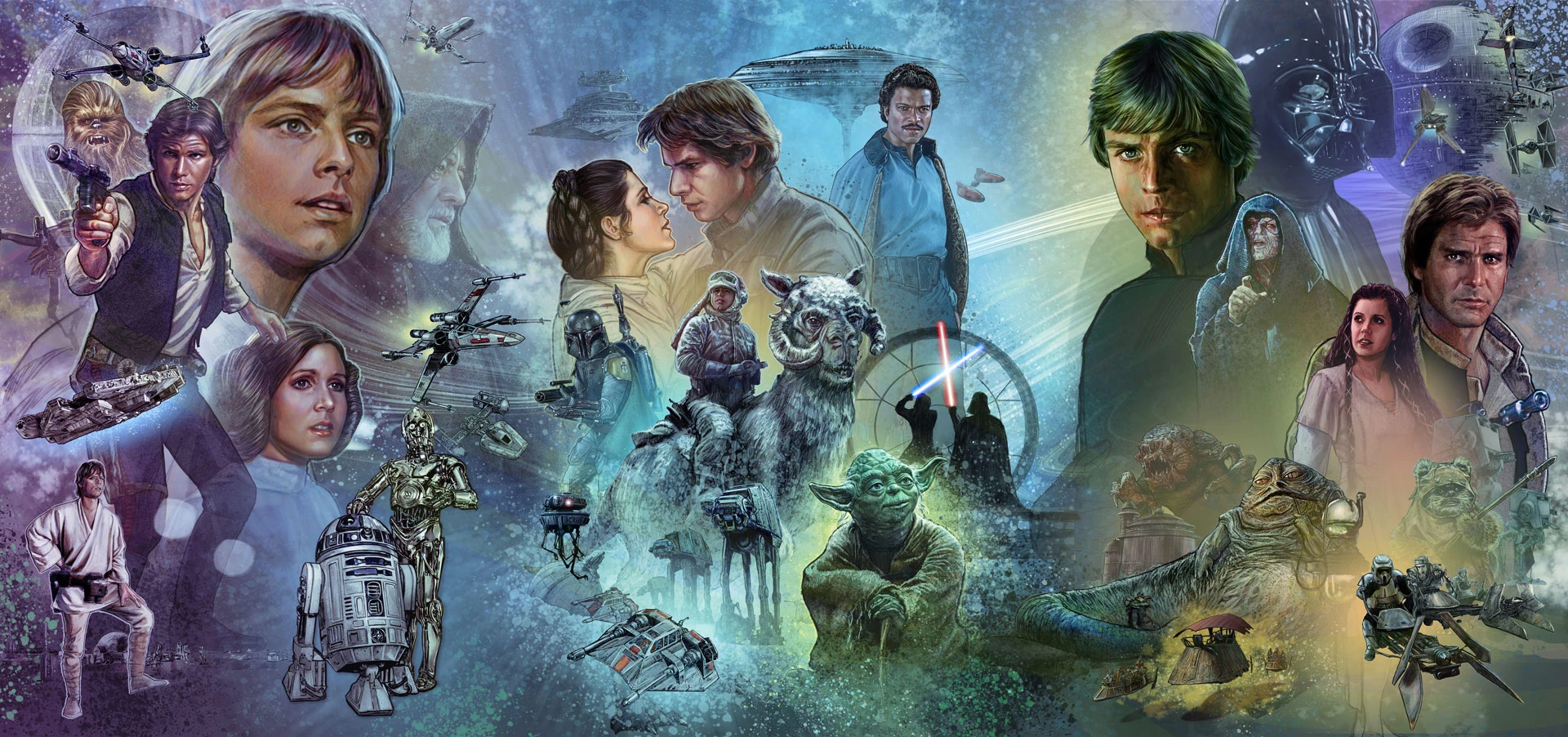
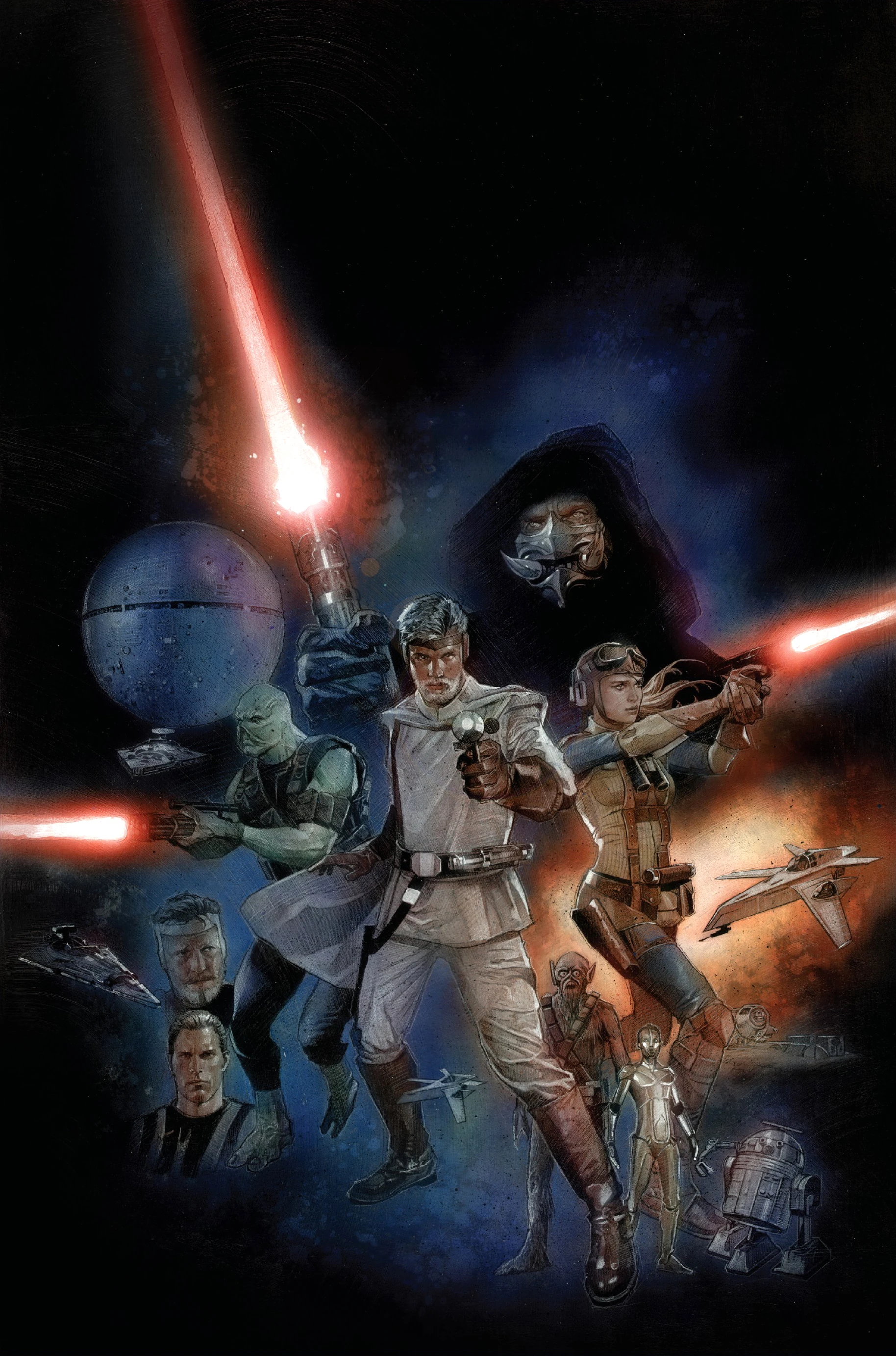

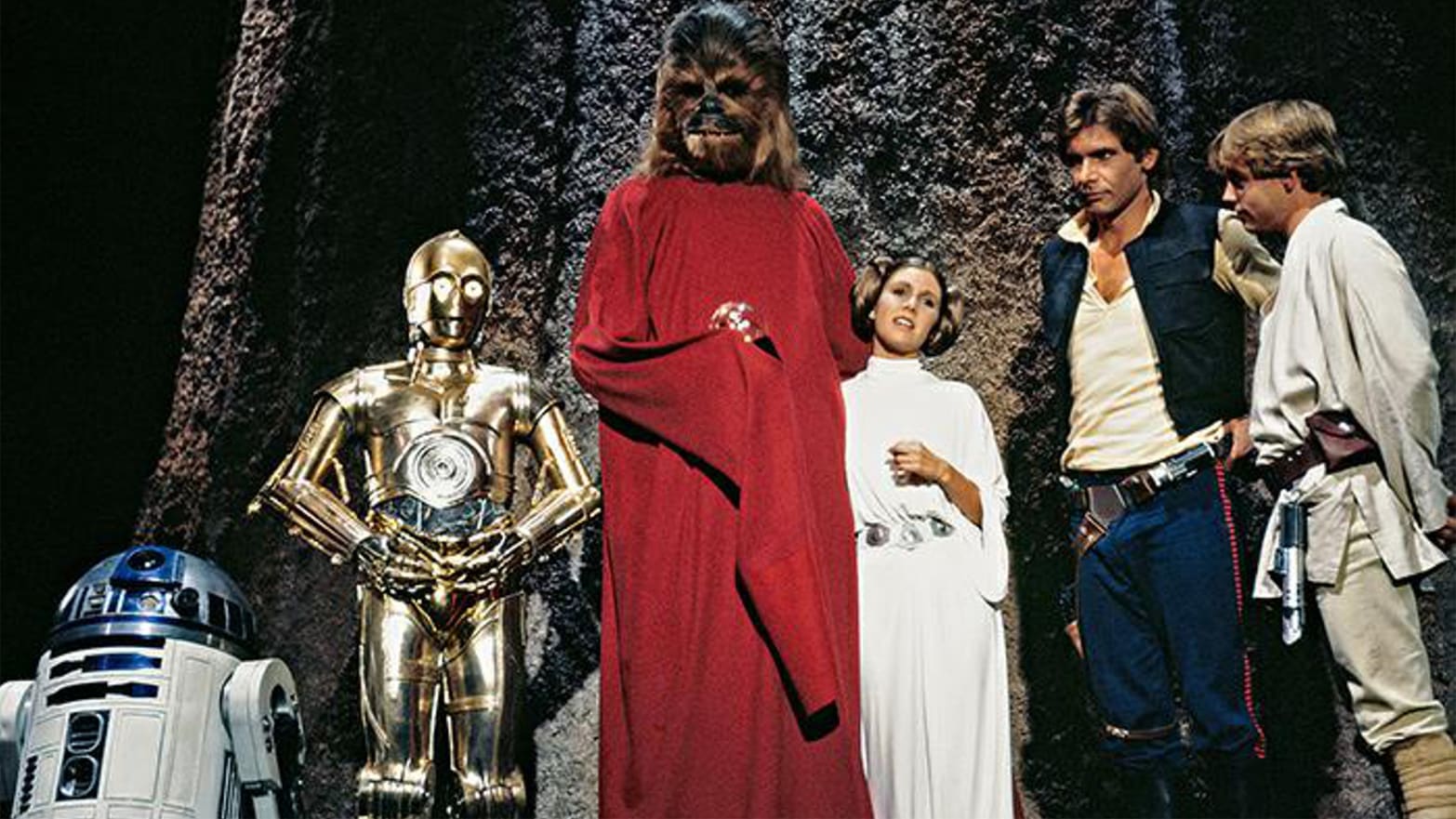
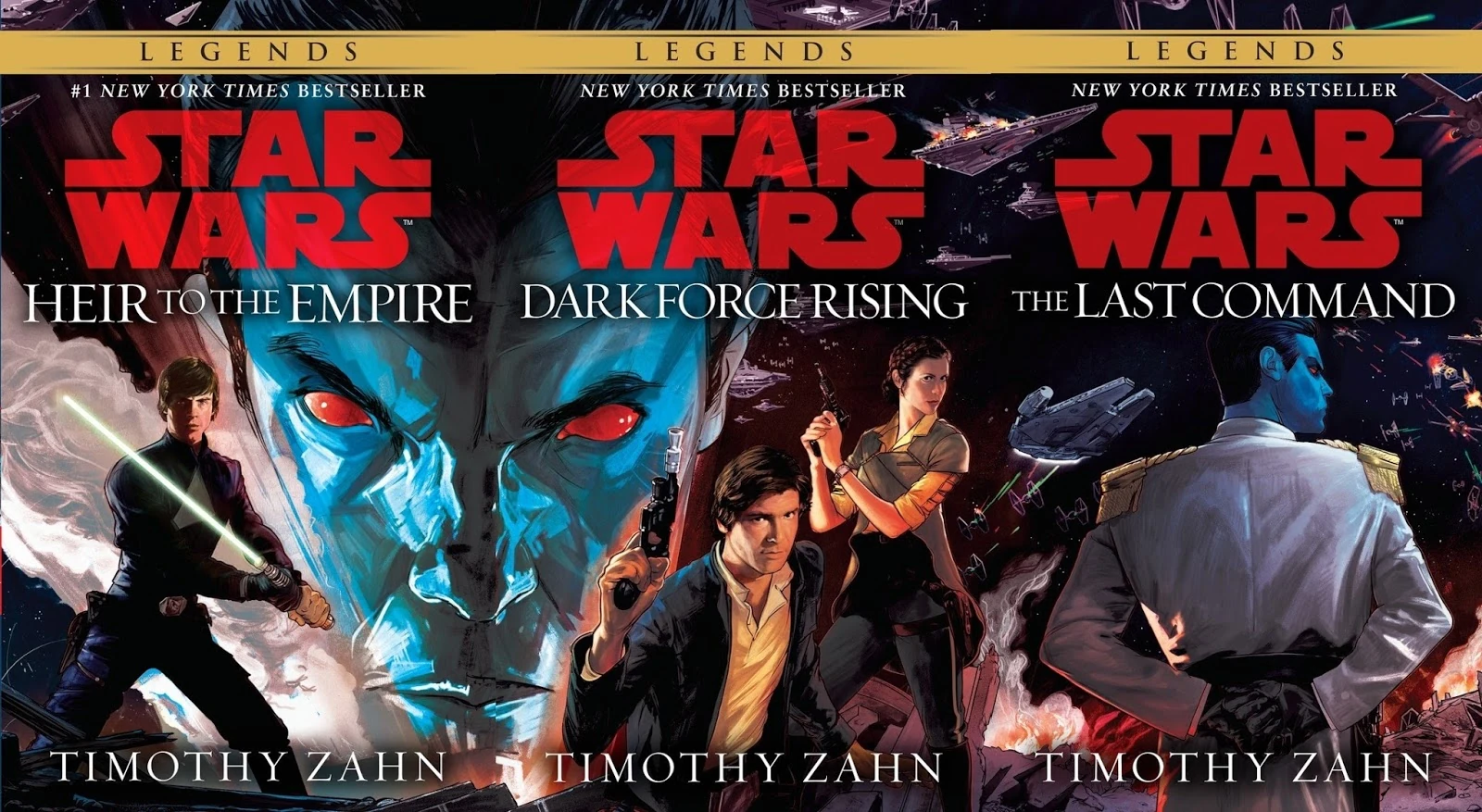


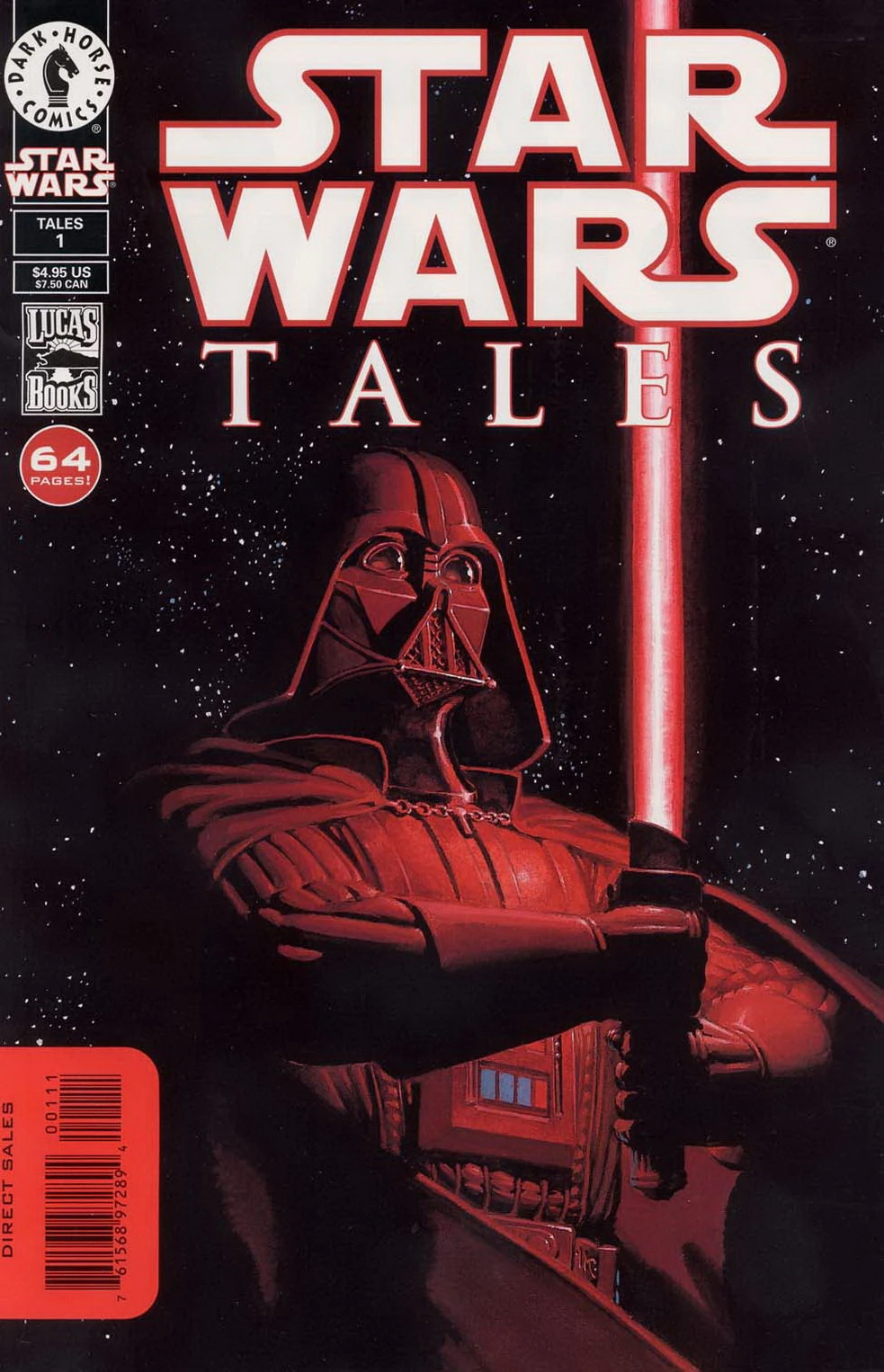



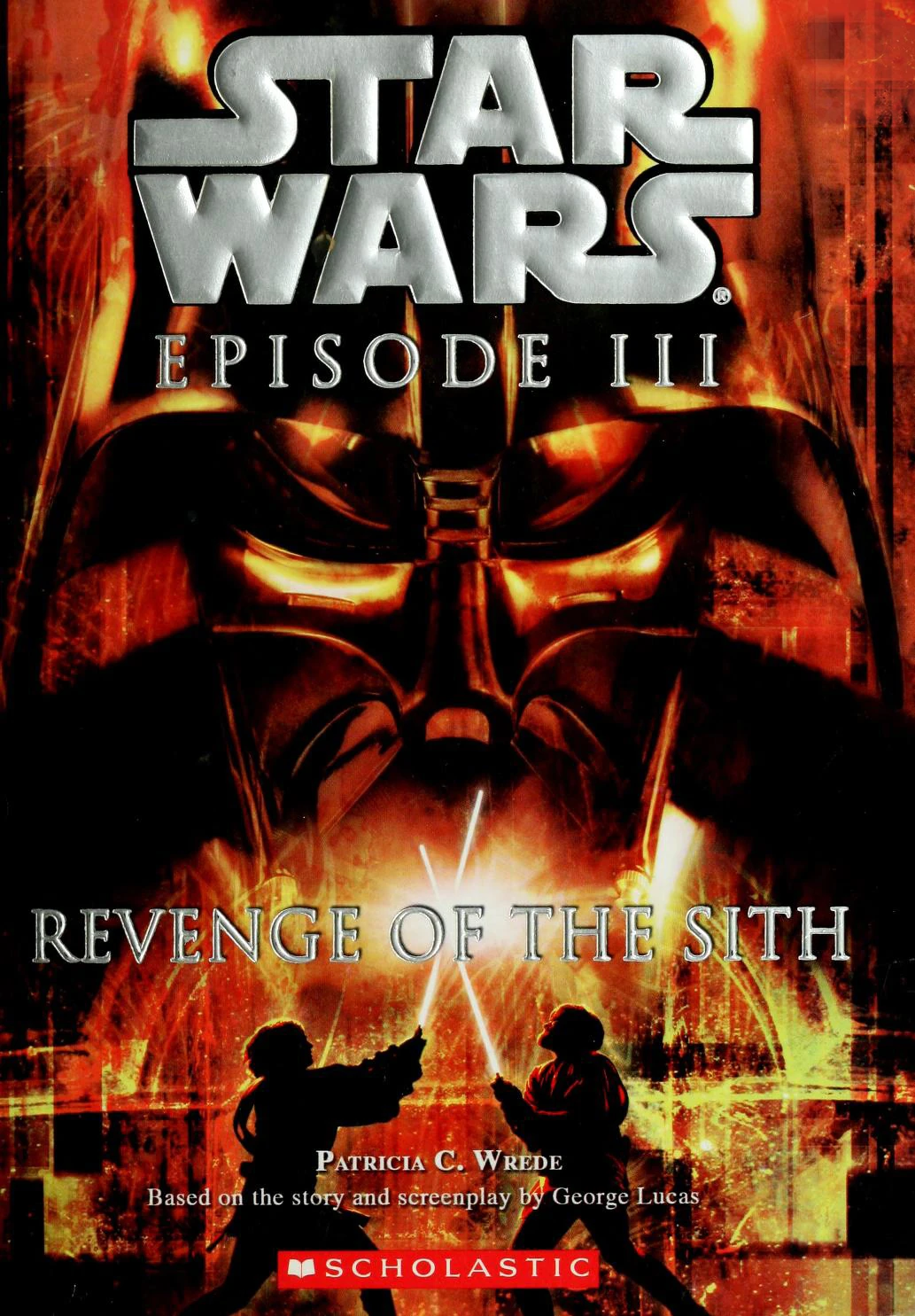


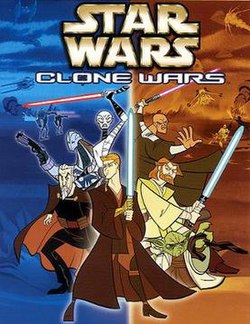
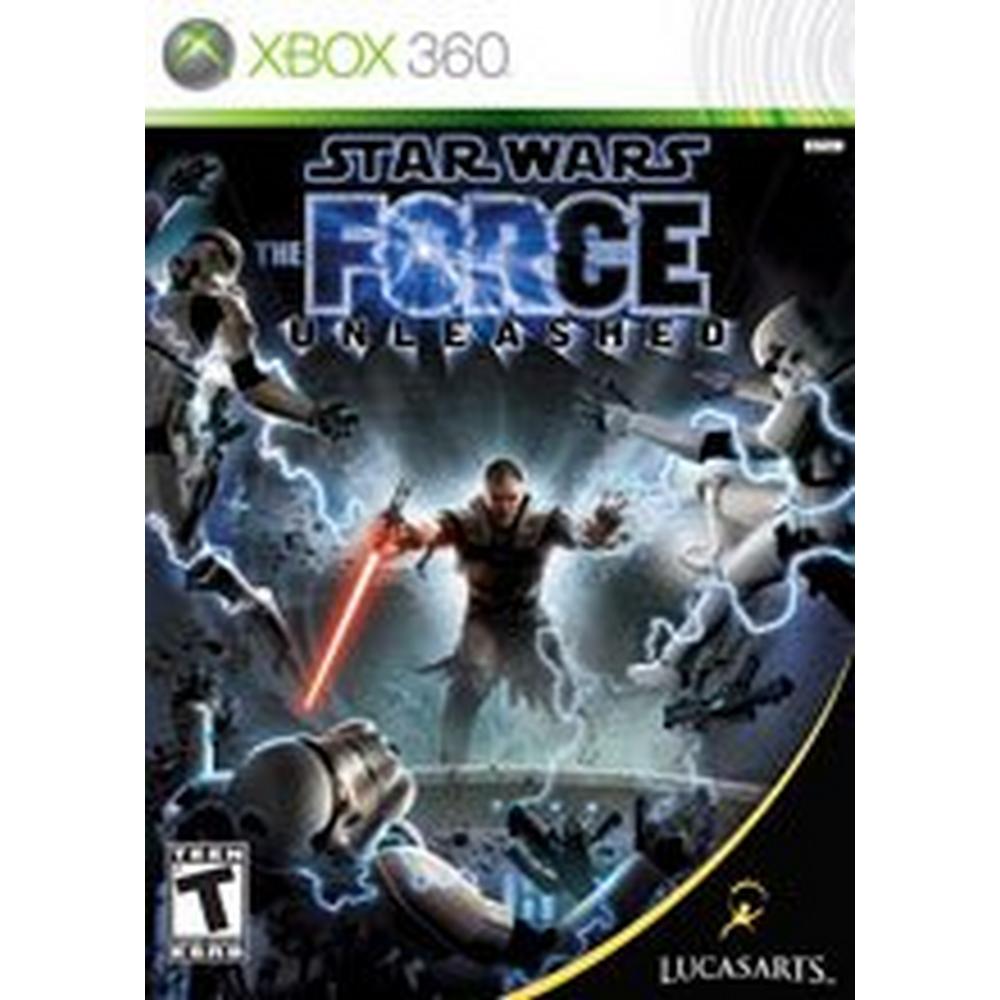



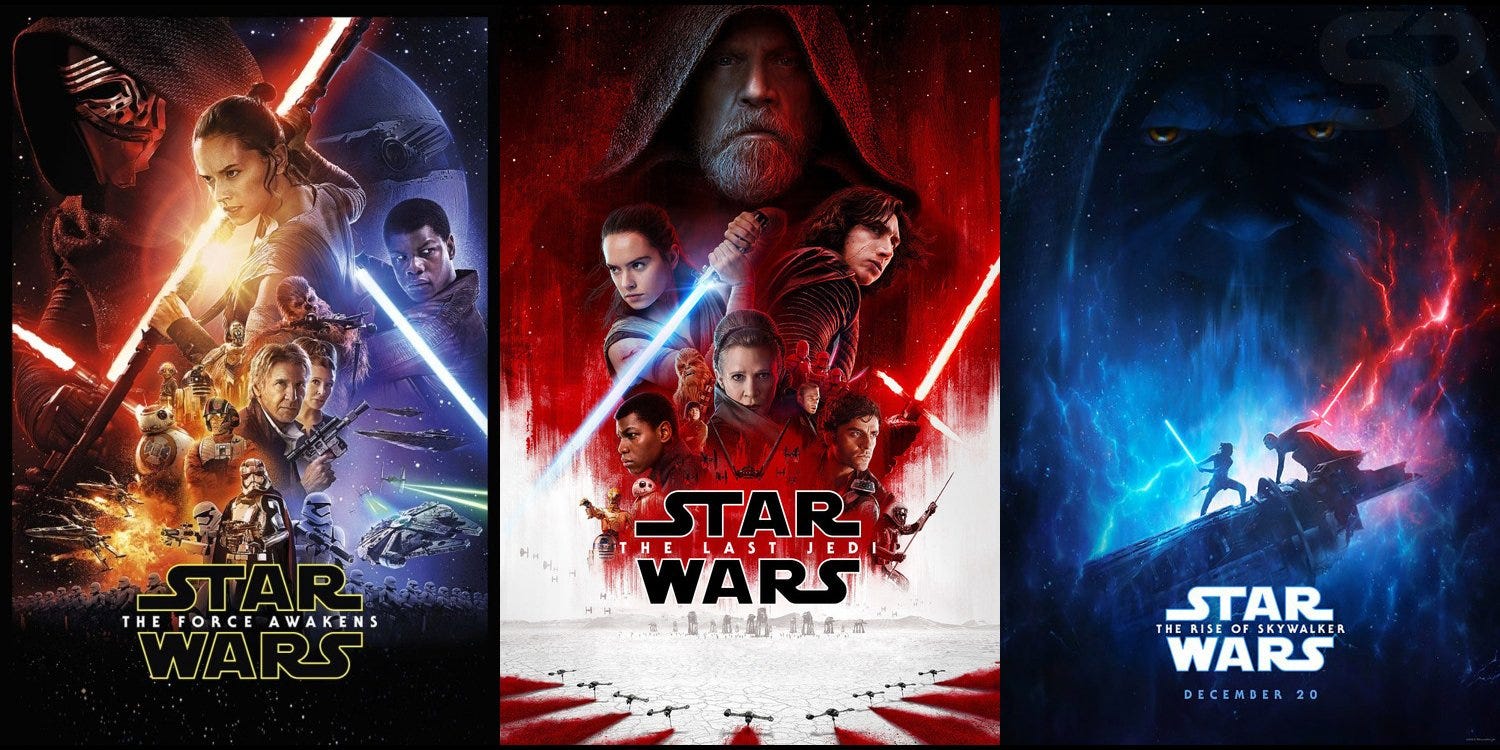
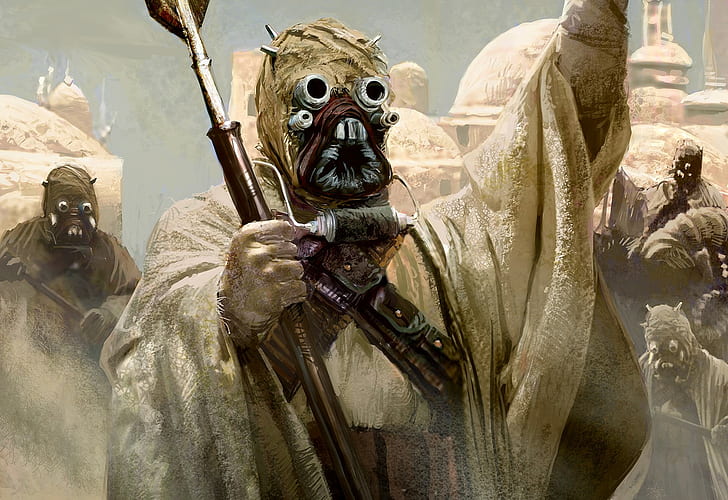

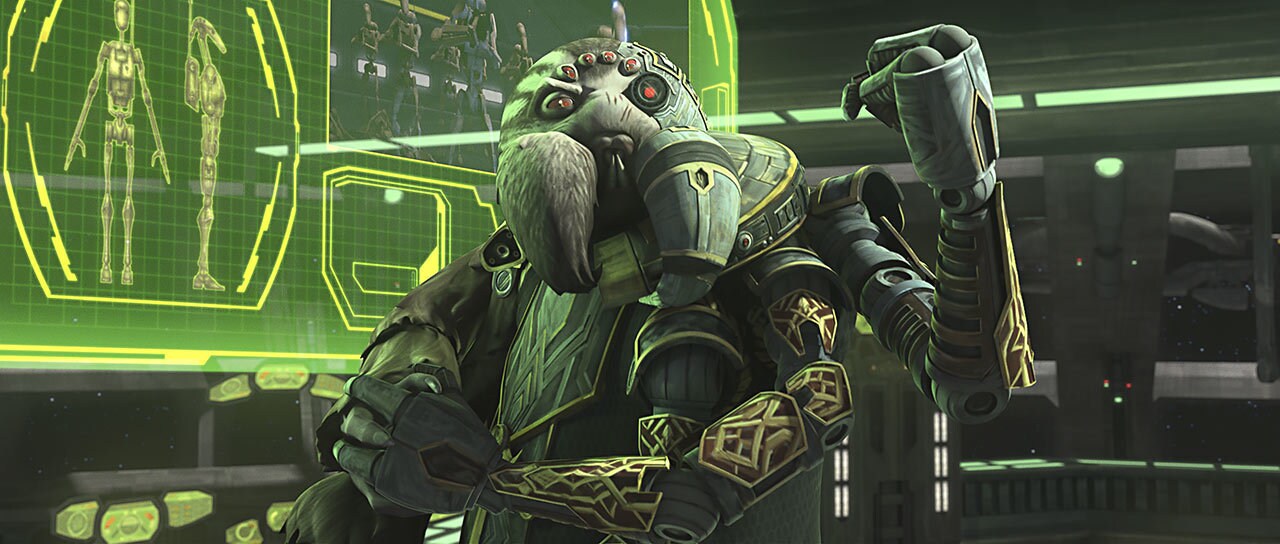
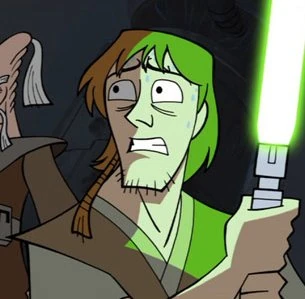
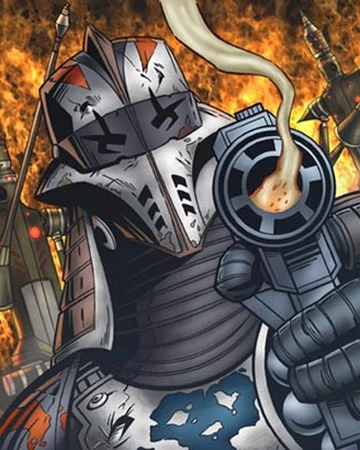
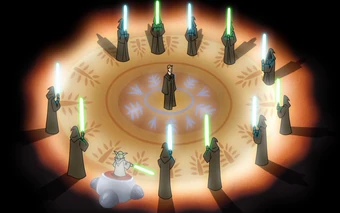

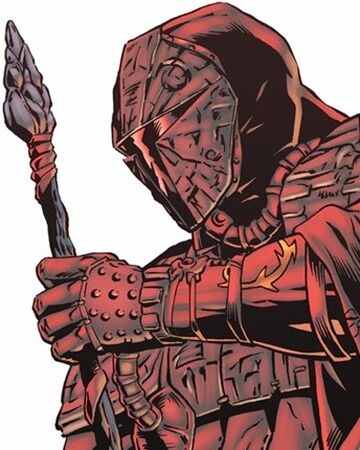


/cdn.vox-cdn.com/uploads/chorus_image/image/65037167/starwars3_movie_screencaps.com_6725.0.jpg)
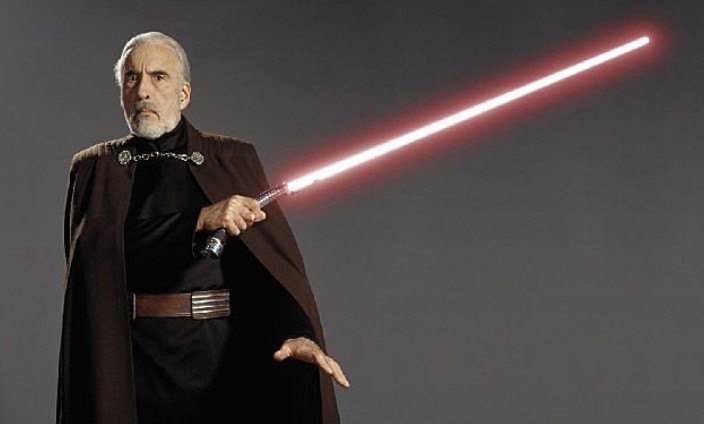





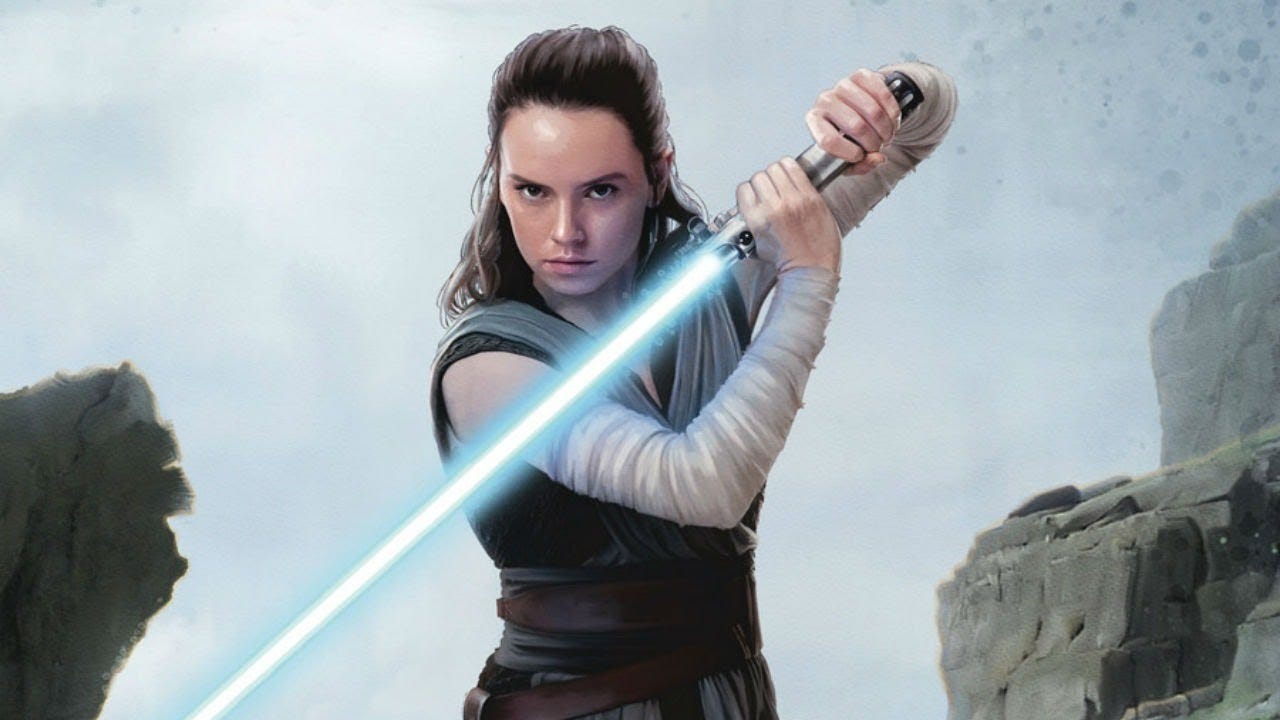


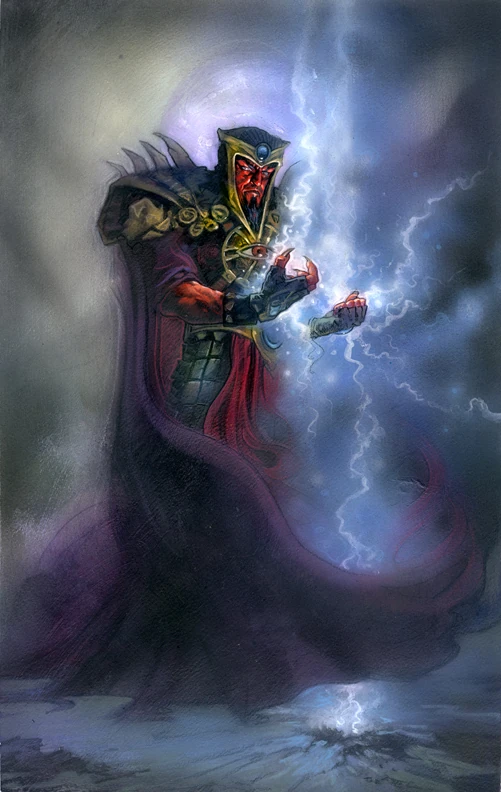
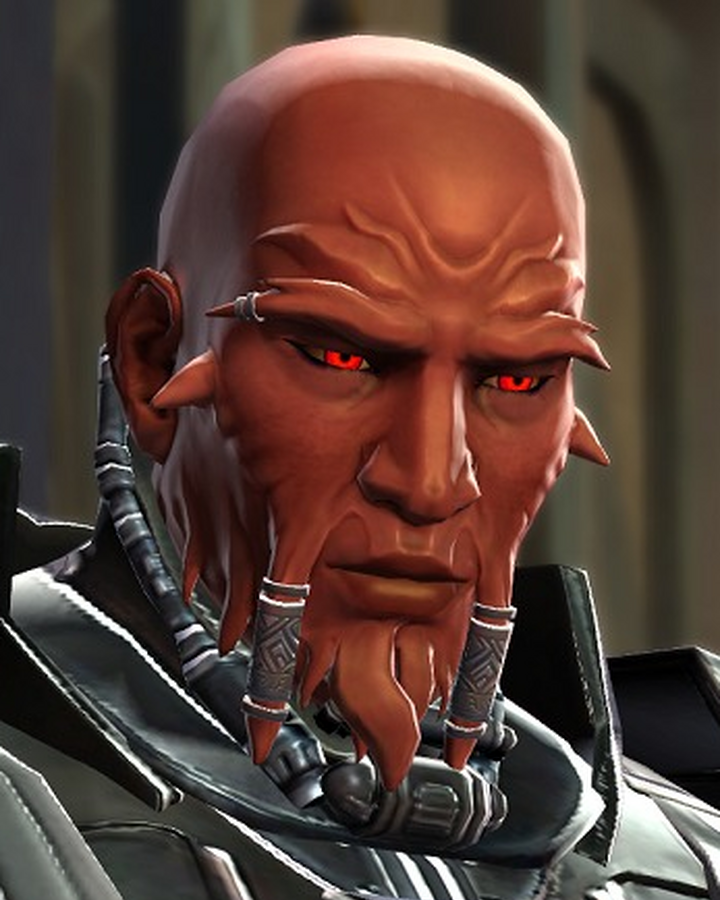
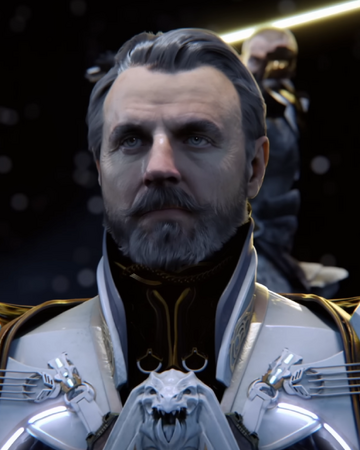
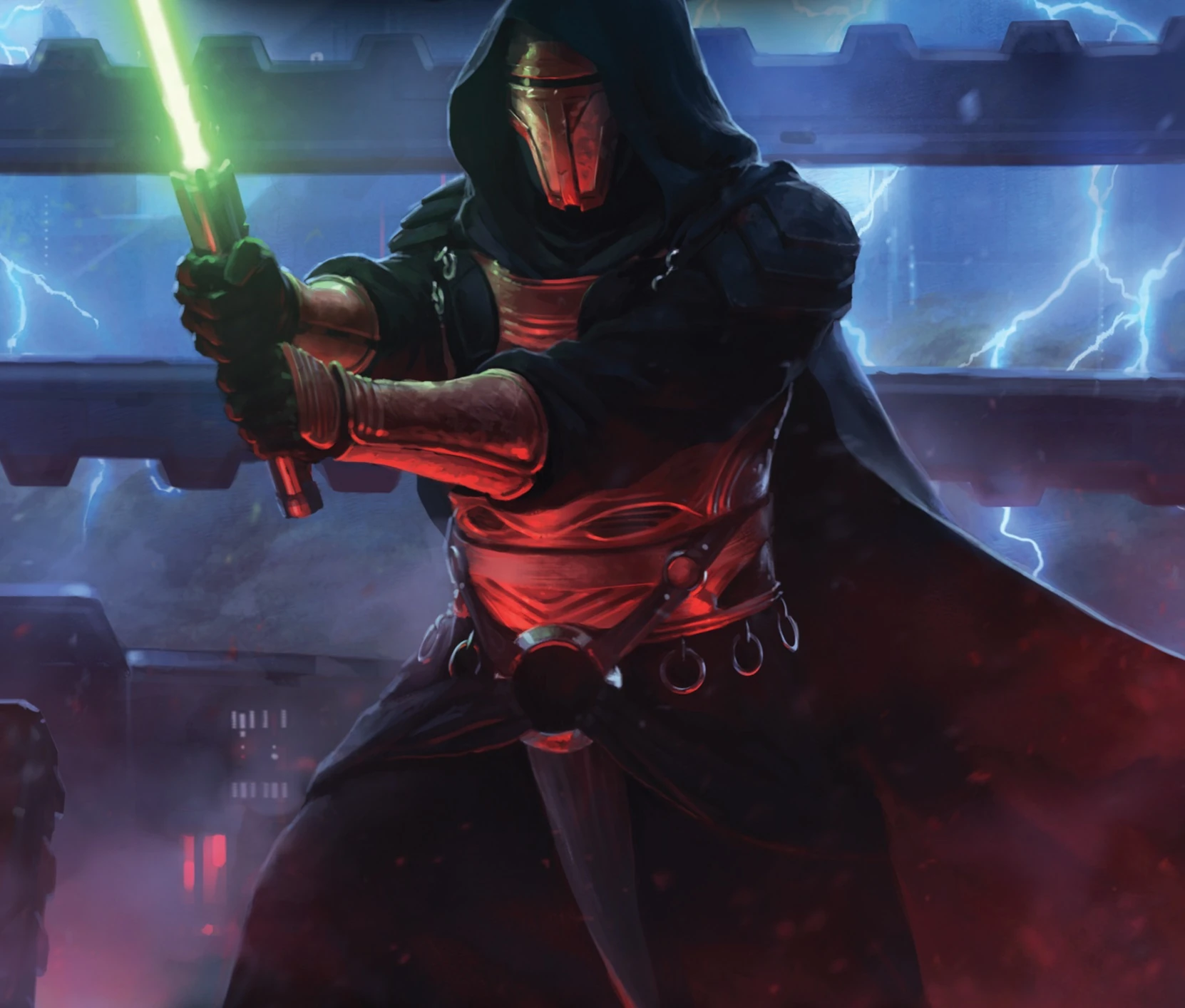
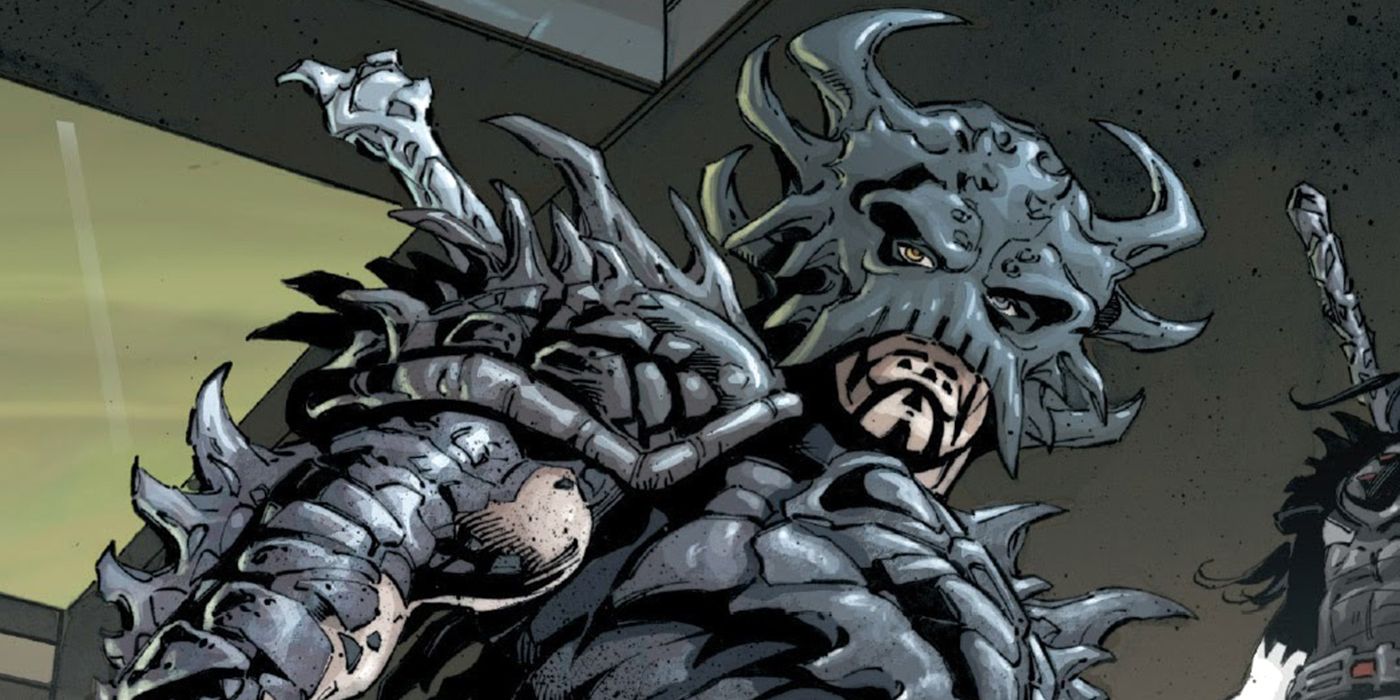





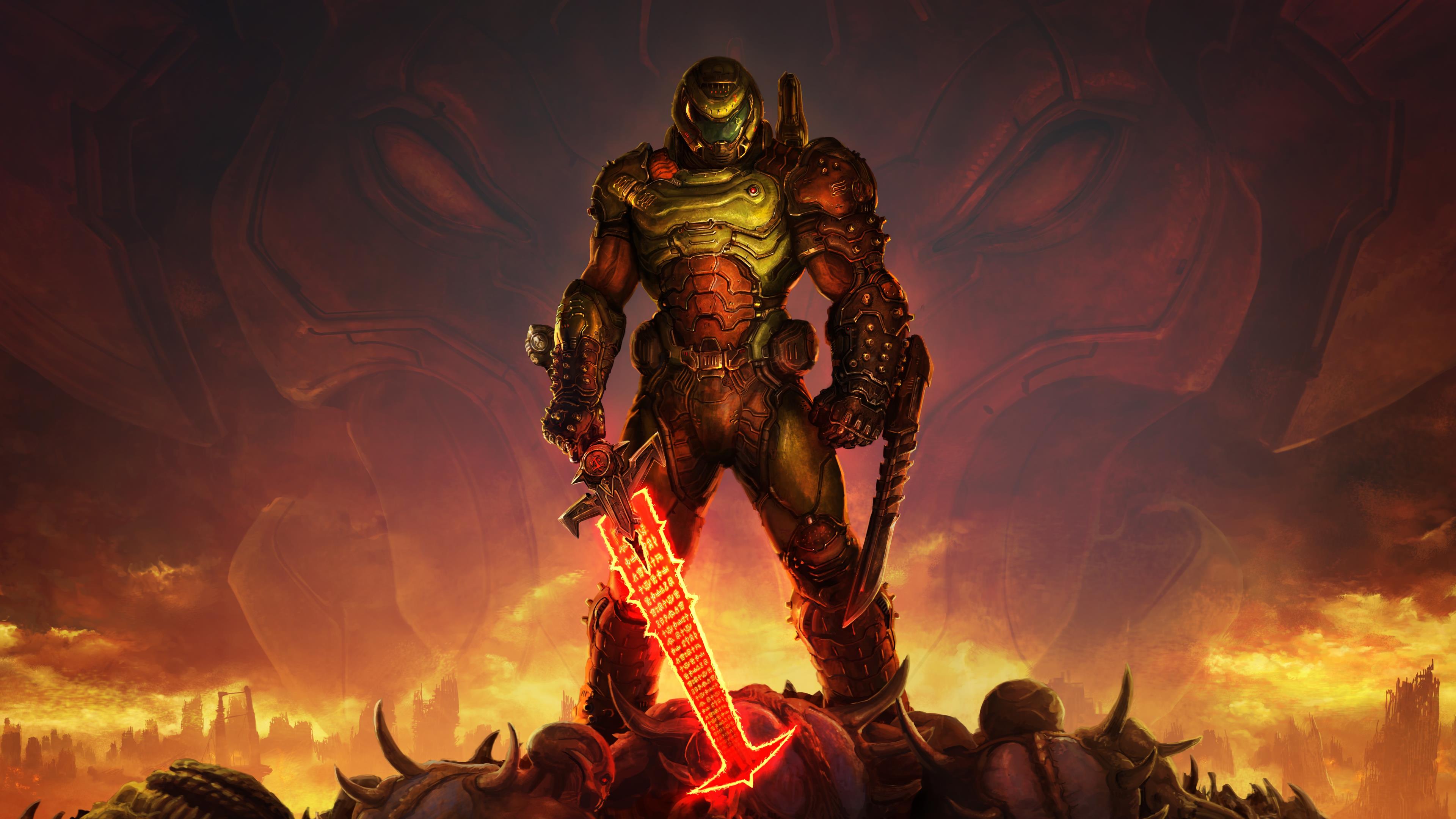


Wow! Talk about an extensive blog! Amazing work Shade. As someone who is known for getting a bit obsessive about certain series, you've really outdone me...whether you take that as a compliment or not :P
ReplyDeleteI thought it was really interesting to hear the philisophical roots of the series explained and where they come from, the Jungian Monomyth and all that, and how that influenced the entirety of the series even parts people naively assume are congruent with it like midichrlorians. The series has a much more complex spiritual worldview then I was previously aware and it was cool to see it laid out in so much detail.
I really like the parts in this blog and your Zelda where you give a listing from bottom to top of the various characters in the verse. Rankings in general I think are a really good way of seeing the slow (or quick) progression a series has so you can understand the powers of the series on a more consistent level rather then just linking to best feat. I was really surprised, I didn't realize it got up to universal.
I also thought it was cool seeing the verse being compared with some other verses so you could understand tier equivalents at the end. If I had one piece of advice, "Celestials" is a Marvel Term and when you say DC Celestials I don't really know what you mean other then sort of working on the assumption that it's DC entities on the level of the celestials. Personally I think that would be about as strong as the Lords of Order and Chaos.
A minor point I did like as well is when you showed that planetary+ levels of force while not seen in the original films is implied and foreshadowed. I like when fiction has a central "part" to it and different creators can expand upon different parts and so seeing that the cosmic levels of power can be traced back to statements made in the original films I thought was very compelling and cool to see.